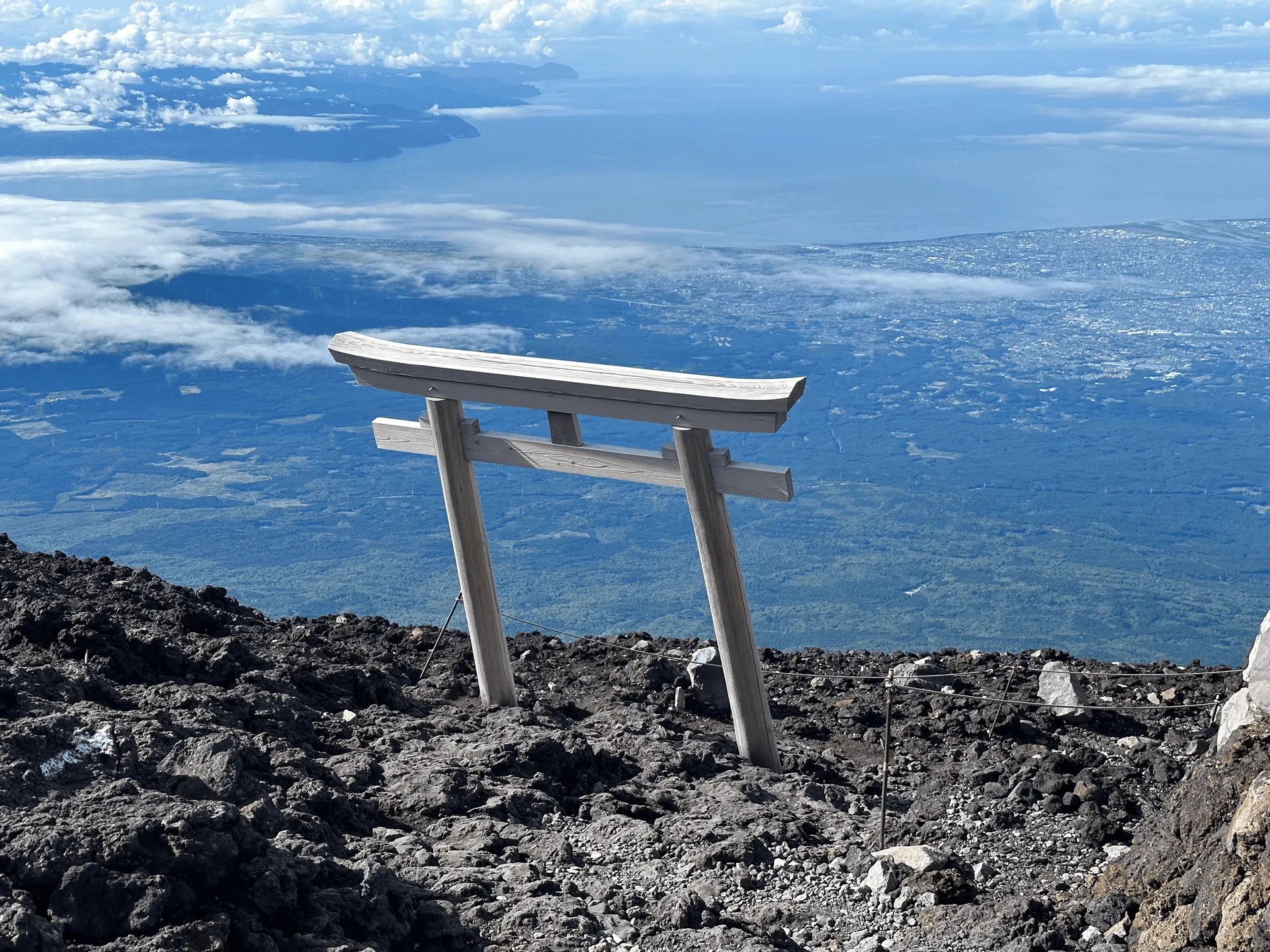
- Elevation 3776m
- When to climb July - August
- If you're taking the most popular Yoshida trail, expect to hike 15km over 10.5 hours. Can be broken up into 2 days.
Mountain stats
Access to the trailhead via local bus from Kawaguchiko station, or come via an overnight bus from Shinjuku.
Due to Mt Fuji's popularity, not recommended by car.
Mt Fuji (富士山, fuji-san) is by far Japan’s most iconic mountain. I’ve had the opportunity to see it from a distance many times on different hikes, but each time the sight of it blows me away. Climbing it can be an amazing experience too, if you are prepared for the long 10 hour hike and are lucky with the weather conditions.
While the course is a bit too long for a normal day hike, I also wasn’t keen on staying in one of the mountain huts - I hear the ones on Mt Fuji are quite crowded. Instead, I got on a midnight bus from Shinjuku and began my hike on the Yoshida trail at 3:40am. So technically a “day” hike, but at the expense of a full night’s sleep.
Due to overcrowding on the trails, the Japanese government has added some entry restrictions - but these restrict you from entering the trail between 2pm and 3am, so hiking via the overnight bus is still a viable option for 2025! You will need to make a trailhead reservation and pay 4000 yen as well.
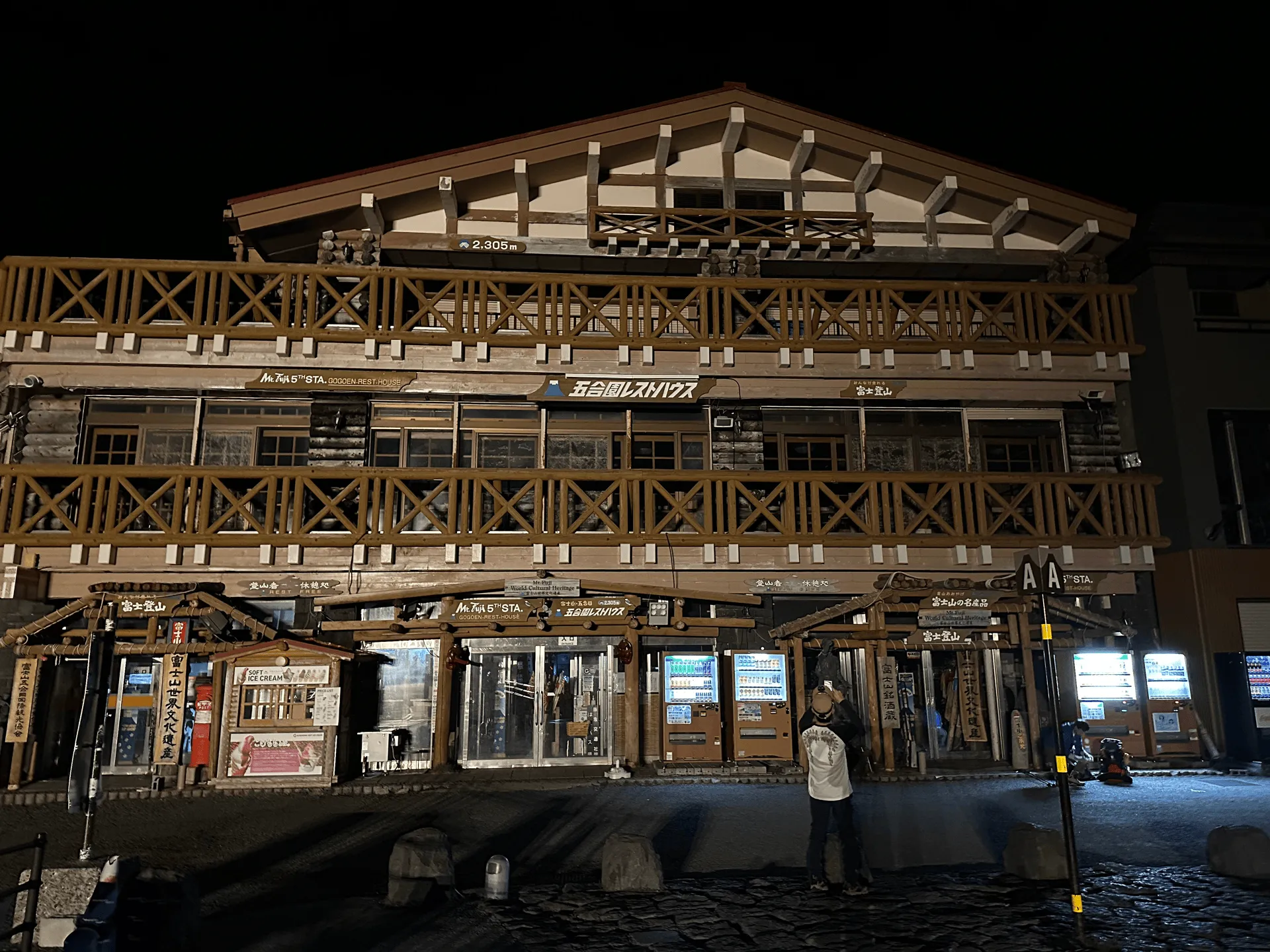
When I hiked Mt Fuji in 2023, the overnight bus departed Shinjuku around 12am, but it seems for 2025 they have changed the schedule to depart at 10pm instead. Before reaching the trailhead, the bus will stop off at an onsen. This gives you a chance to stretch your legs and try and get in a quick nap (on the tatami flooring).
The bus will then drop you off at the Subaru 5th station at 3:30am, and you have until 5pm to finish your hike before the return bus leaves. This will take you up via the Yoshida trail, which is the most popular route. Since the official course time is 10.5 hours, this should give you plenty of time to complete the hike.
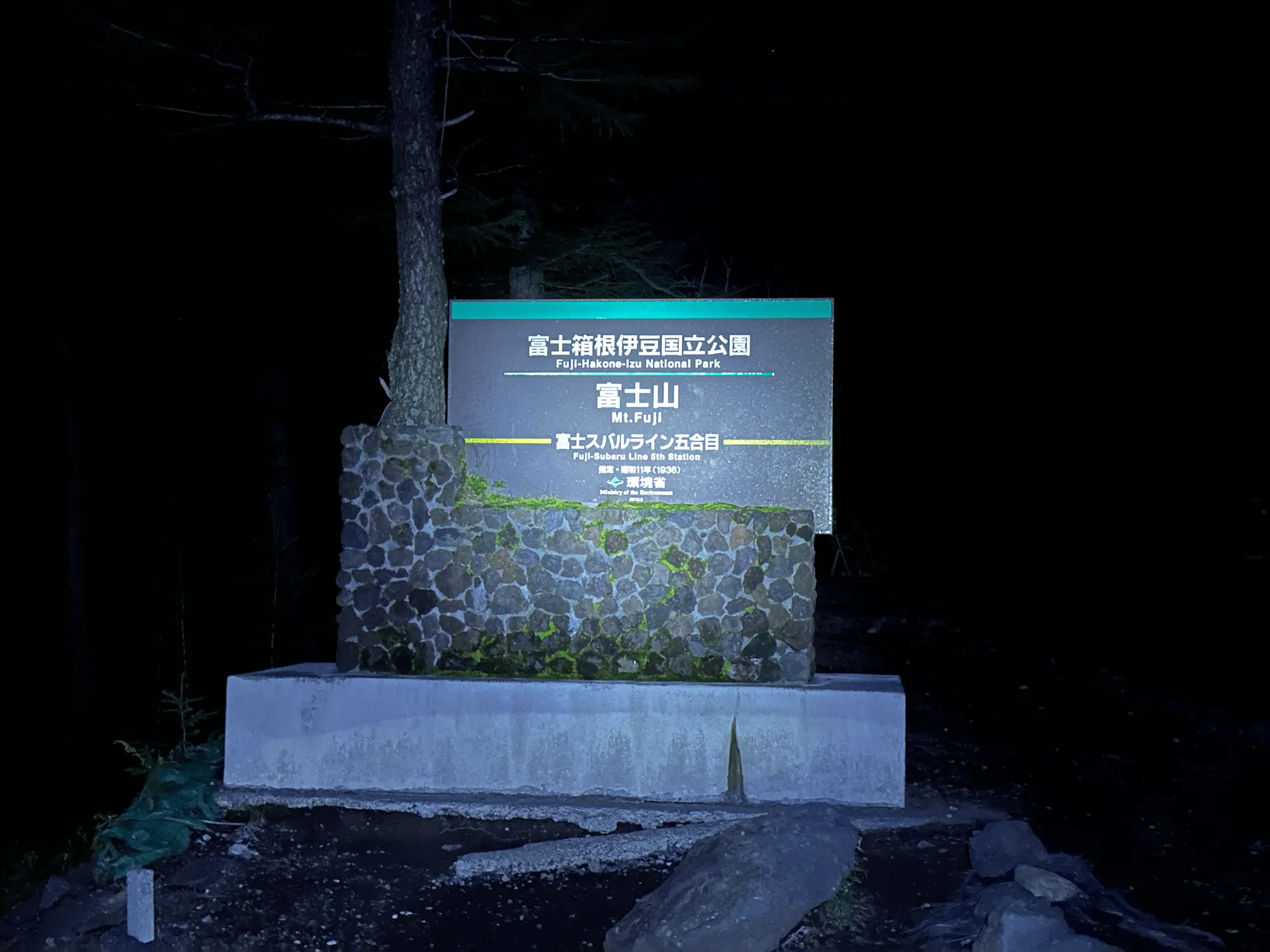
Since it was still dark on the trail, I started off with a headlamp. I hiked on a weekday at the end of August (the tail-end of the season), so it was pretty quiet, but a handful of people got off the bus with me. So the trailhead wasn’t completely deserted, although quiet enough that I was completely alone for parts of the first hour of the hike.
The trail should be signposted well-enough, but you can also make use of Japan’s GPS hiking app YAMAP if you want the extra certainty you are heading in the right direction.
As you begin climbing, you can spot the lights of the city down below, as well as the little lights coming from other hikers and the mountain huts further up on the trail.
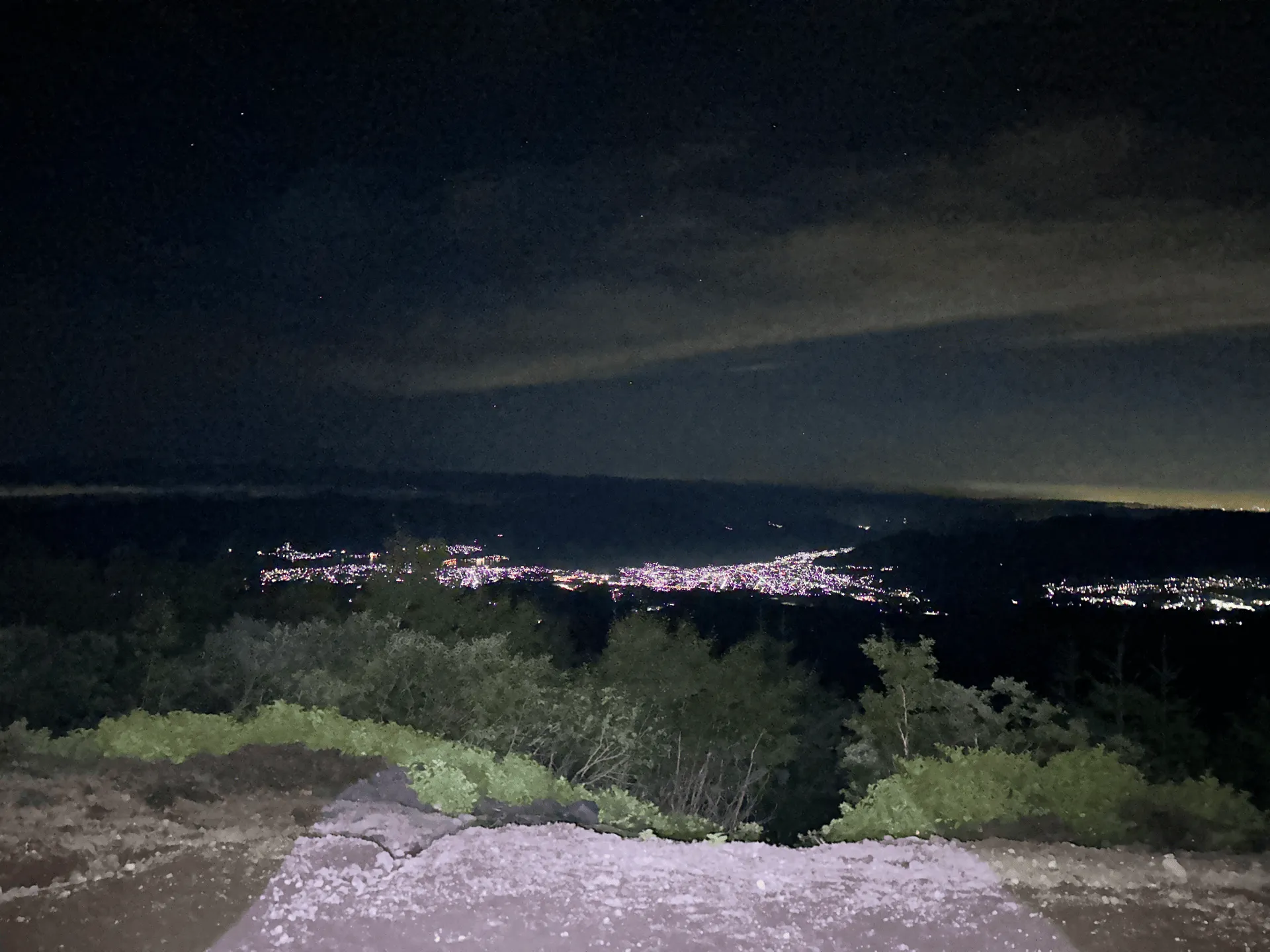
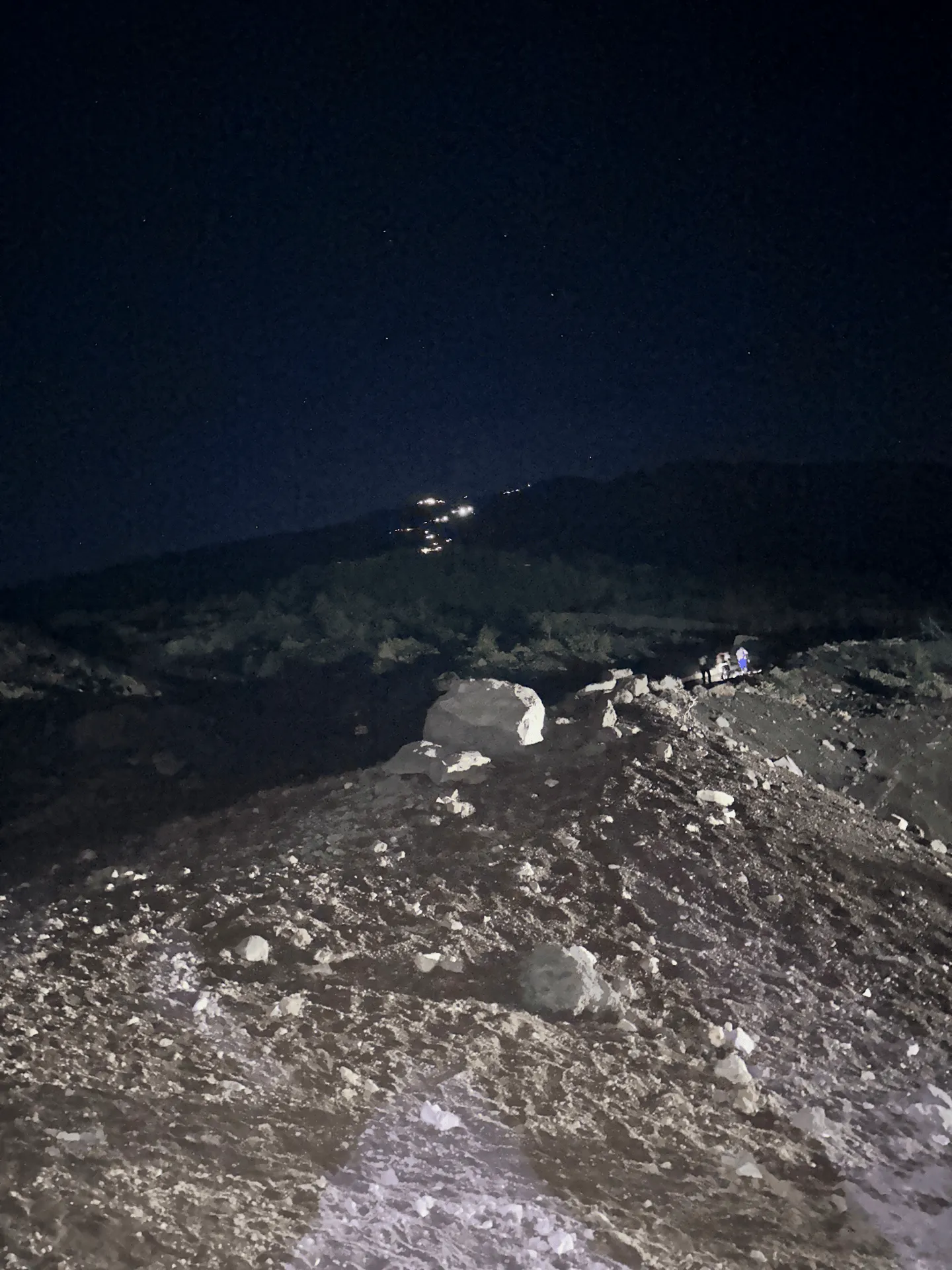
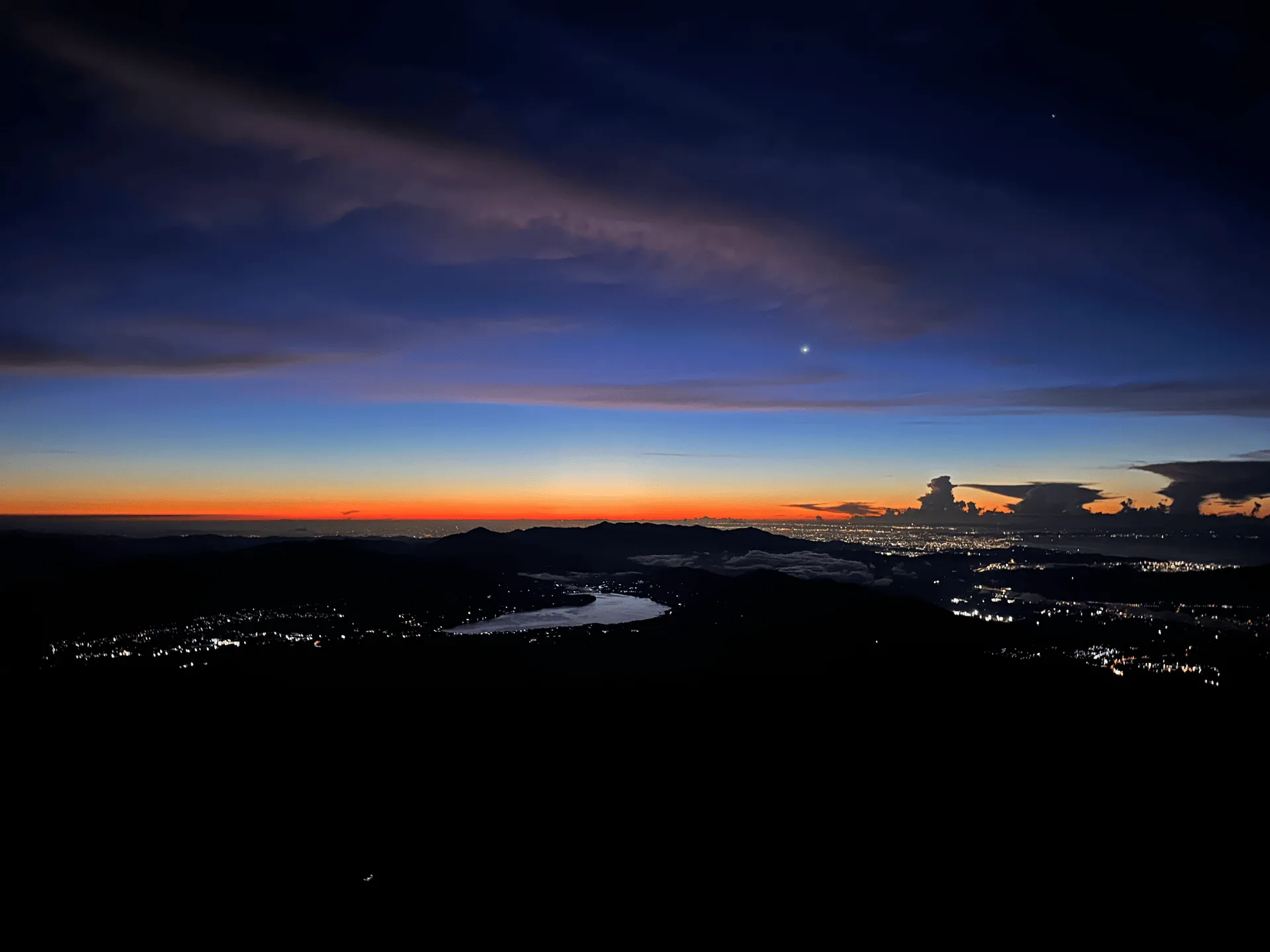
But it quickly starts to get light as the sun prepares to reveal itself, and soon the trail is lit with the orange of the sunrise. I took a break to take in the view.
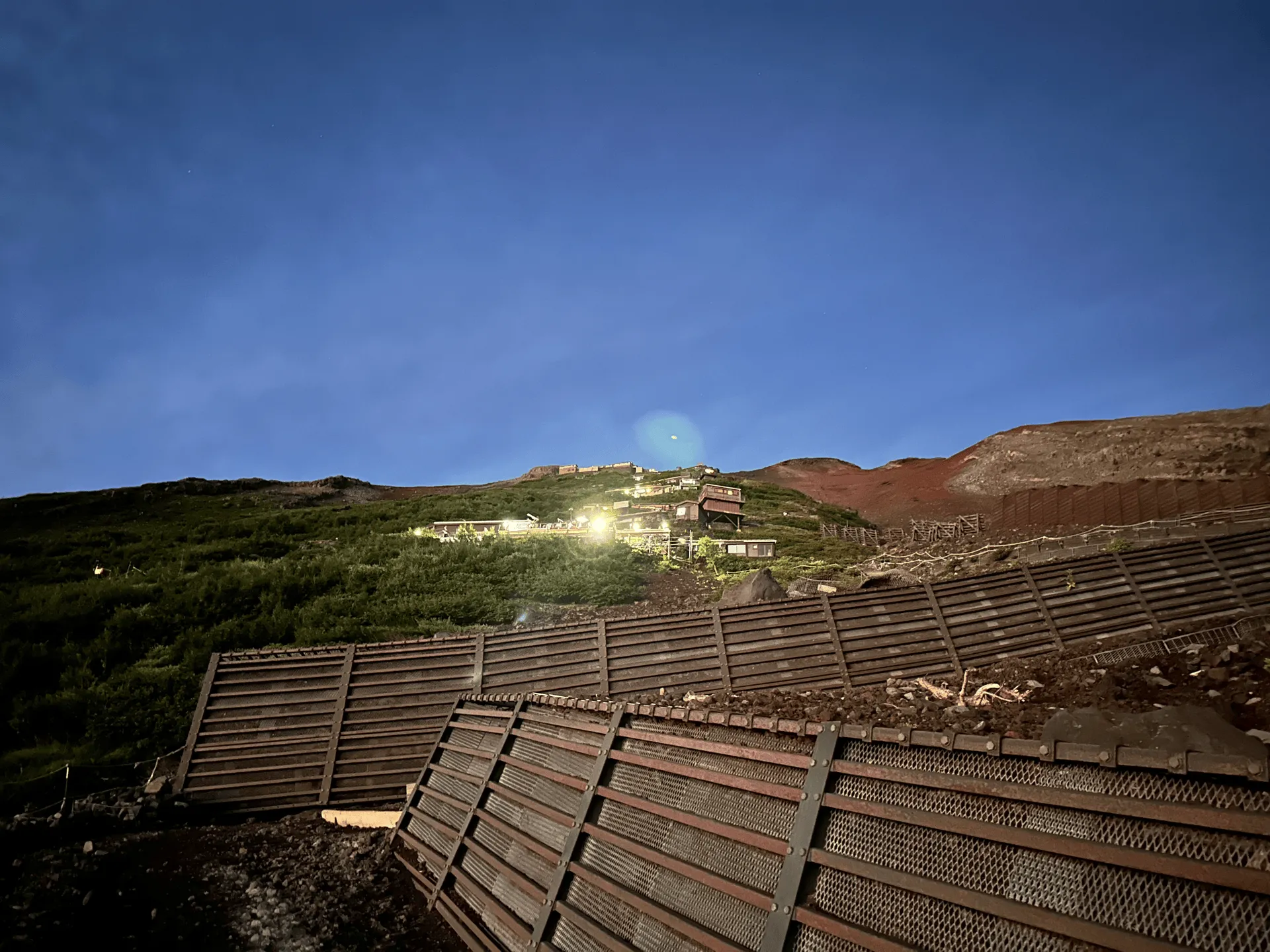
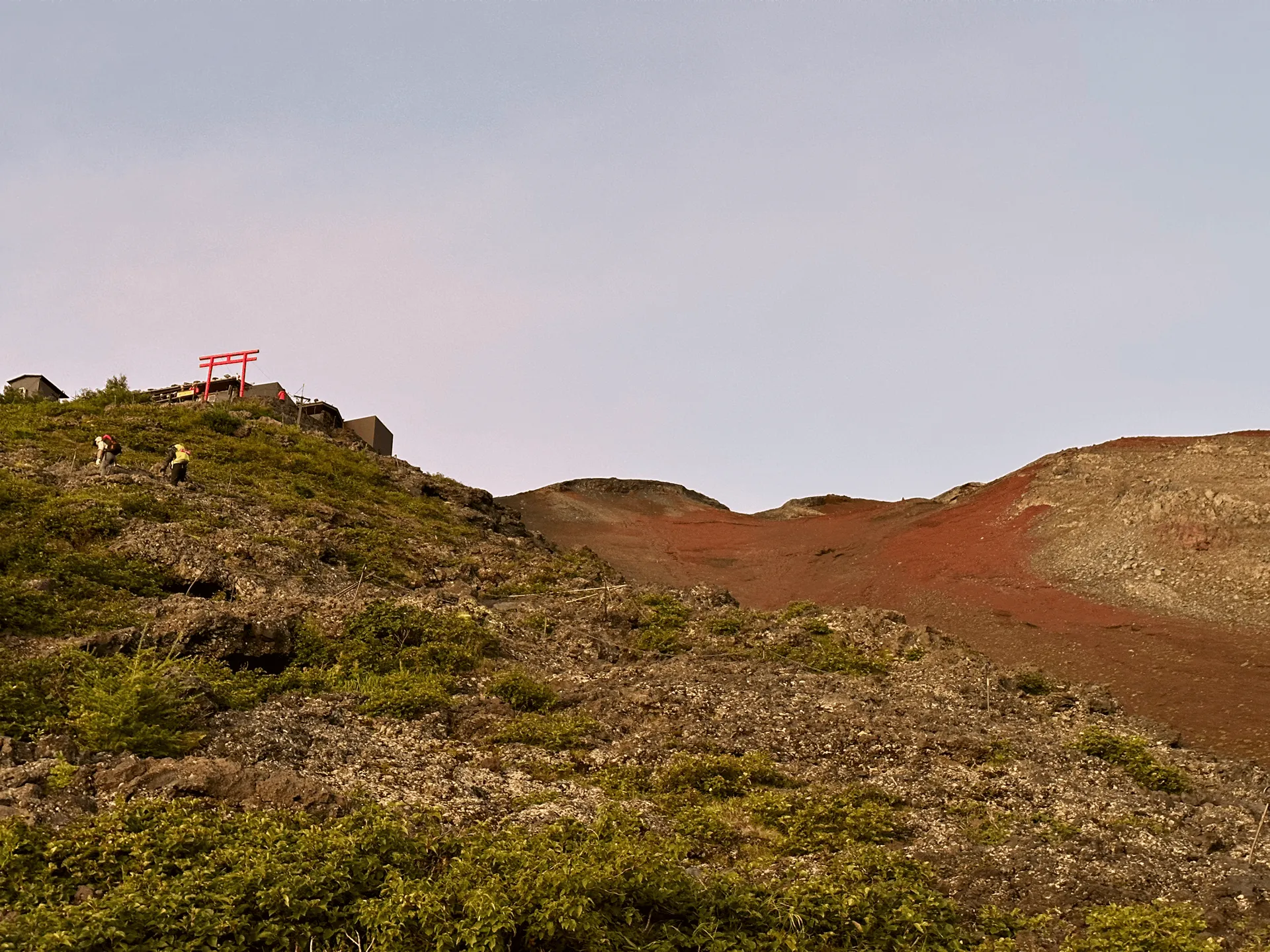
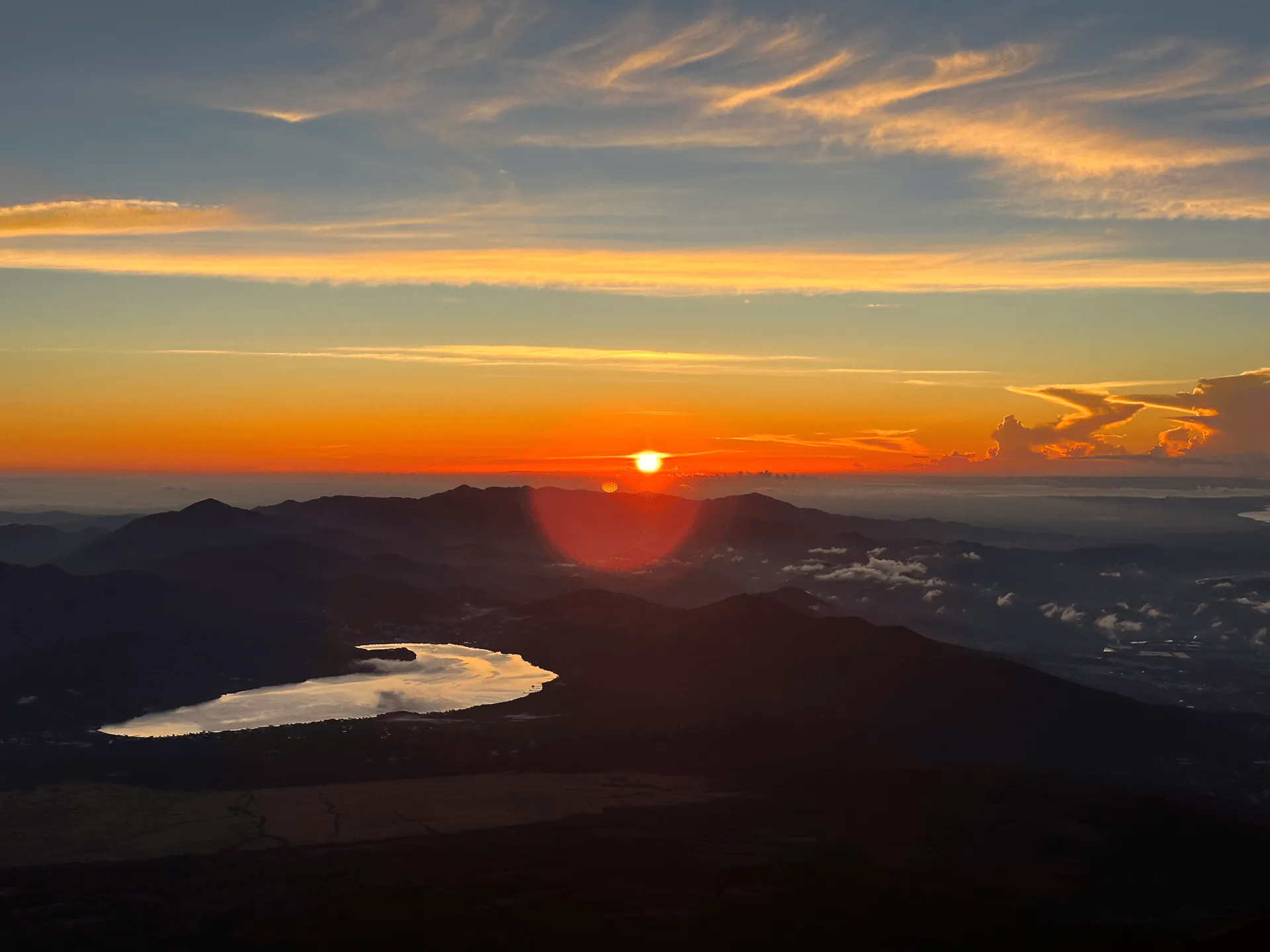
I even managed to spot a deer below me off the trail!
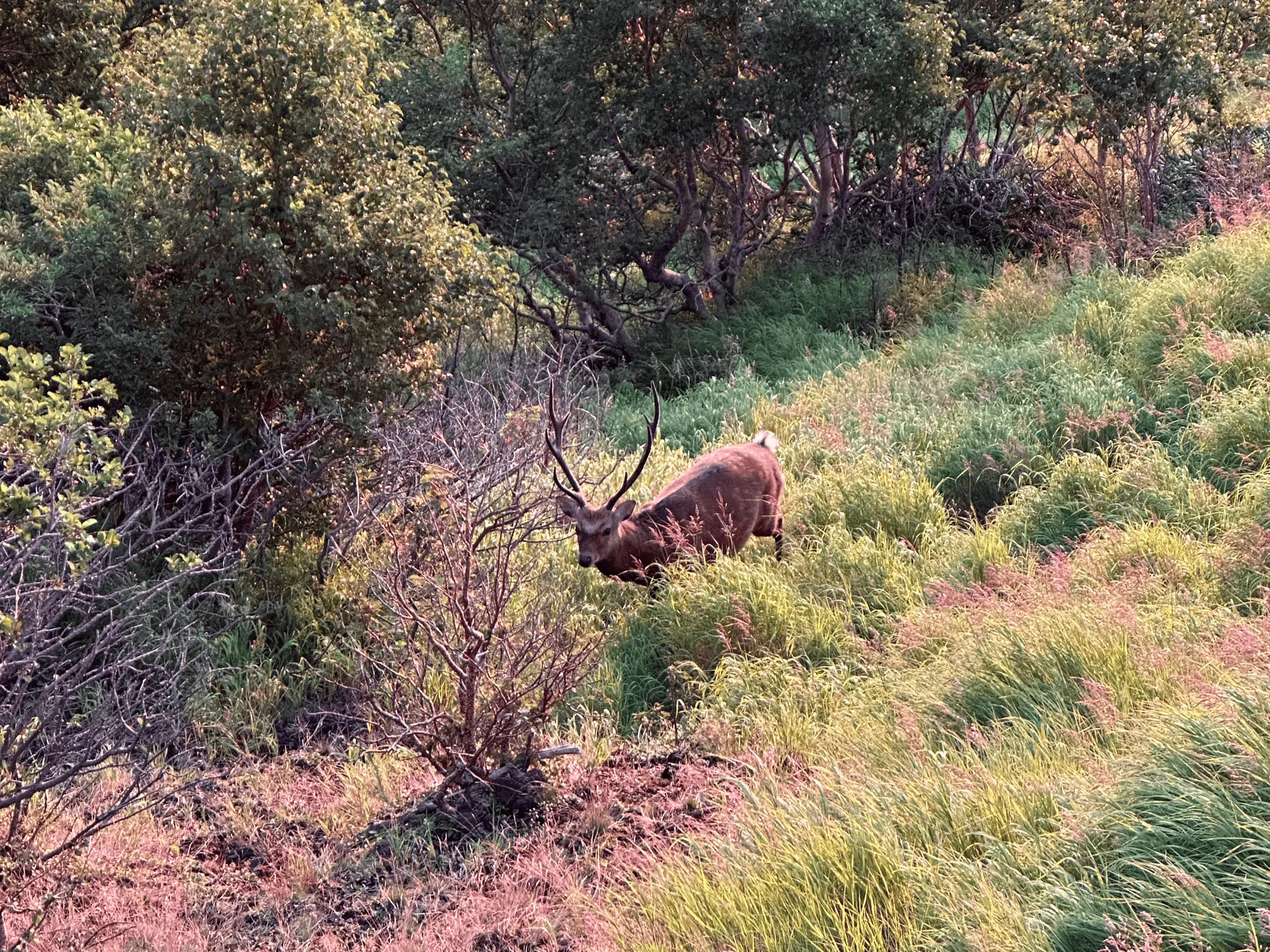
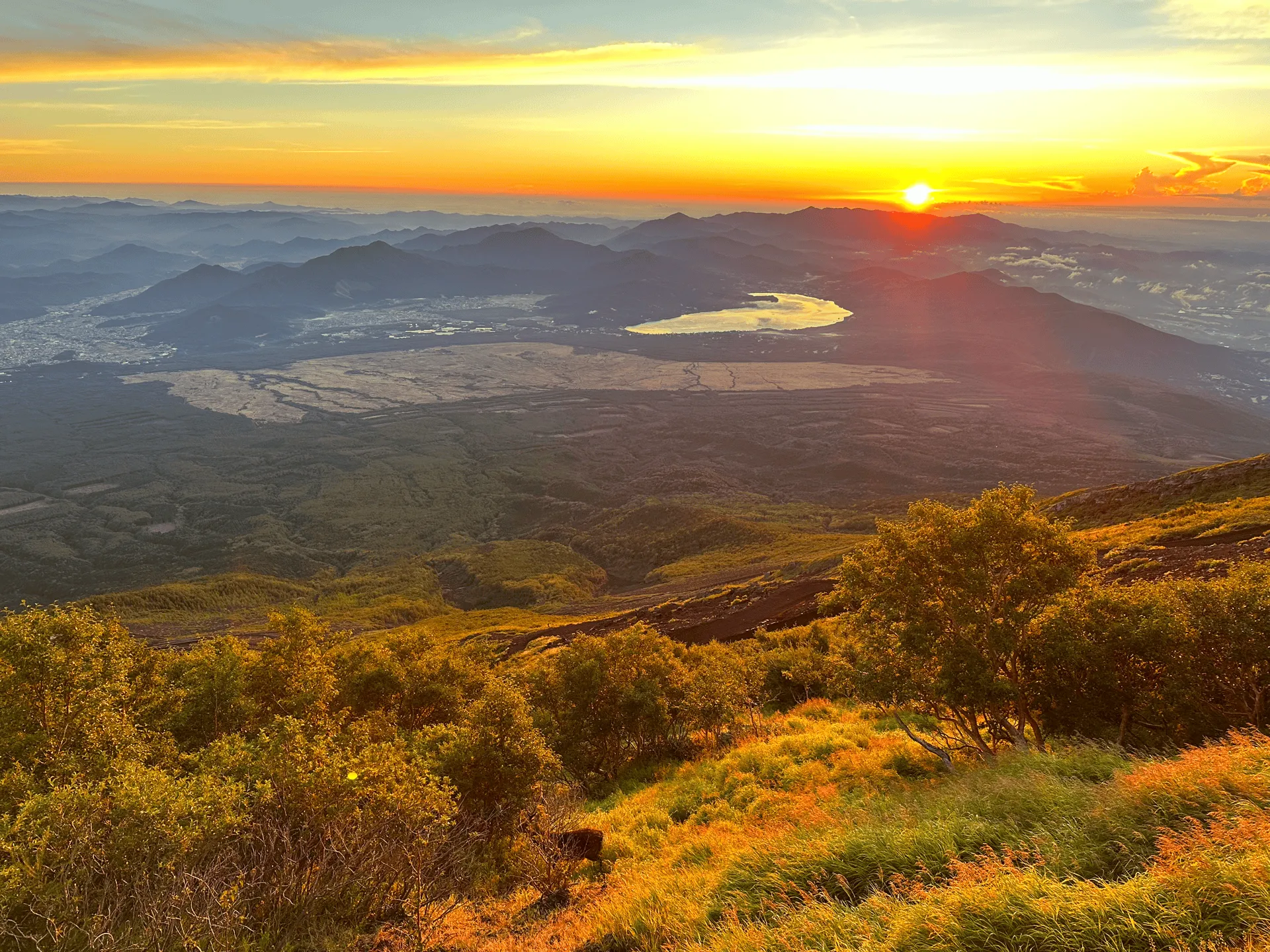
After the sun rose, I started to pass some of the first mountain huts on the trail, and some more people started to pop out on the trail as well. They had probably spent the night at the mountain hut, watched the sunrise, and were now starting on day 2 of their hike.
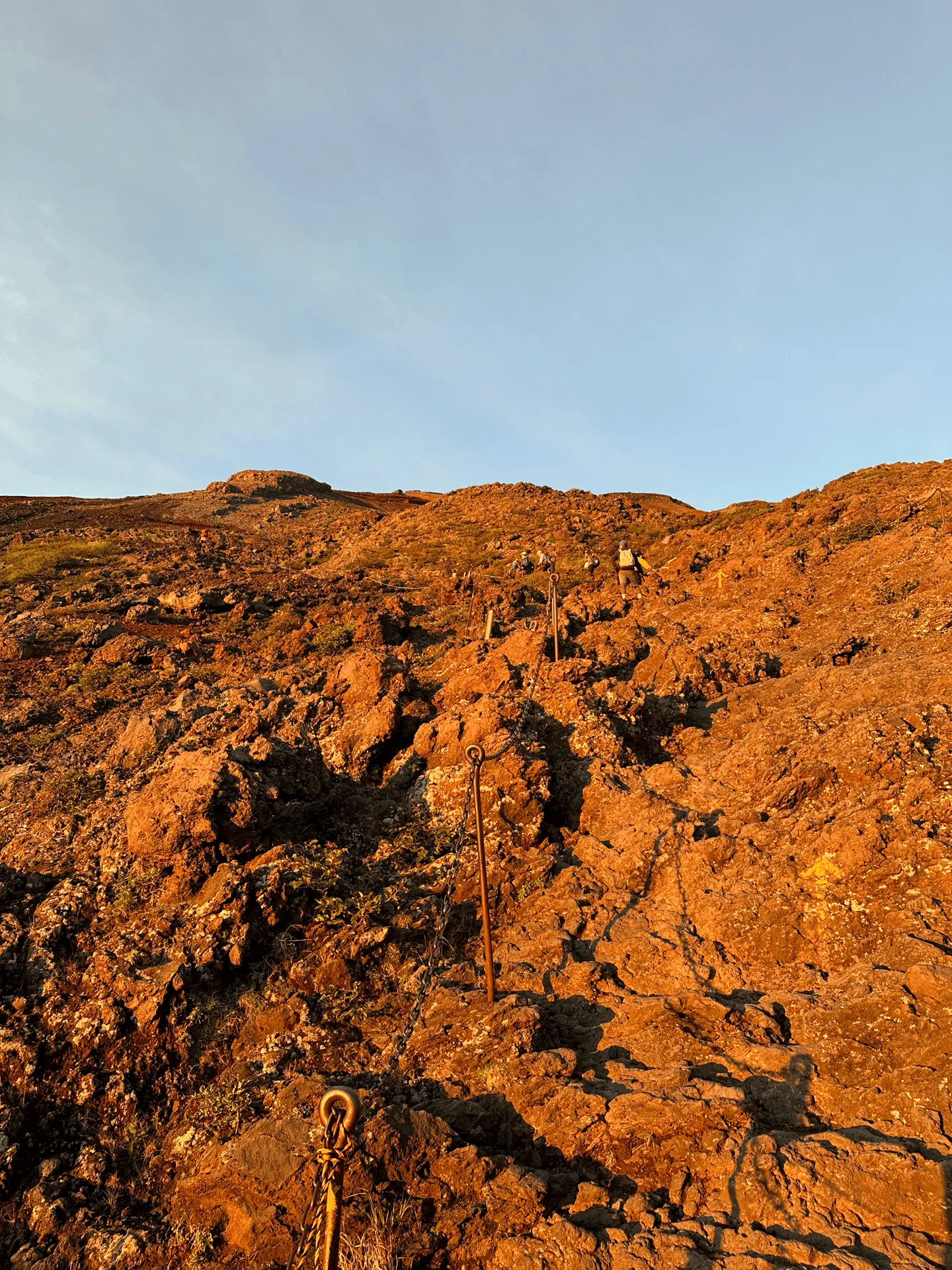
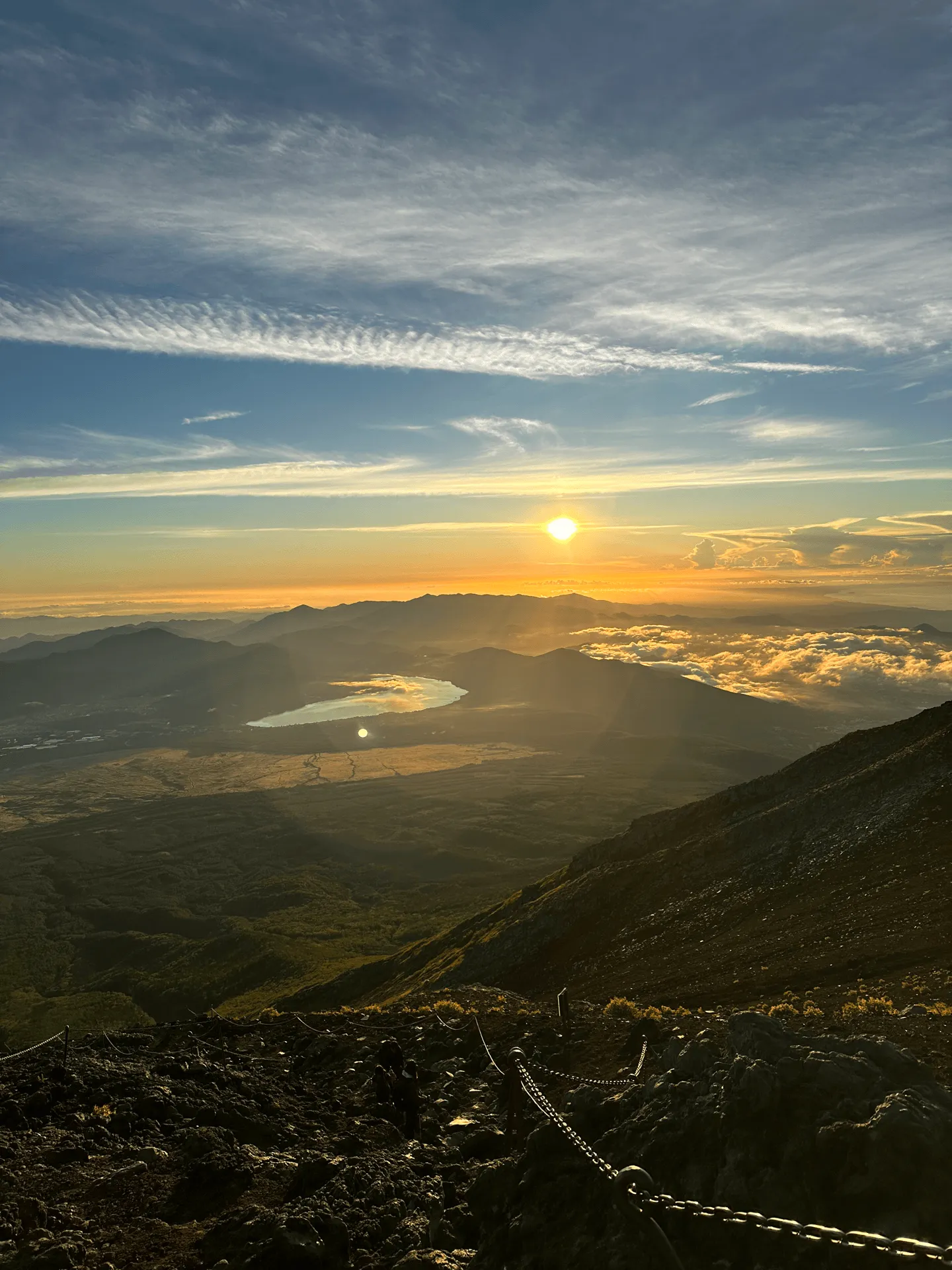
Once I got over 3000m in elevation, the altitude started to get to me a little bit. Luckily I didn’t experience any proper altitude sickness, but the thinner air meant stopping more often and taking longer breaks. The final push to the summit felt like I would take 10 steps, and then wait a minute to rest, and was very slow-going. Everyone else around me was also in the same position, so I felt a sense of camaraderie that we were all suffering together.
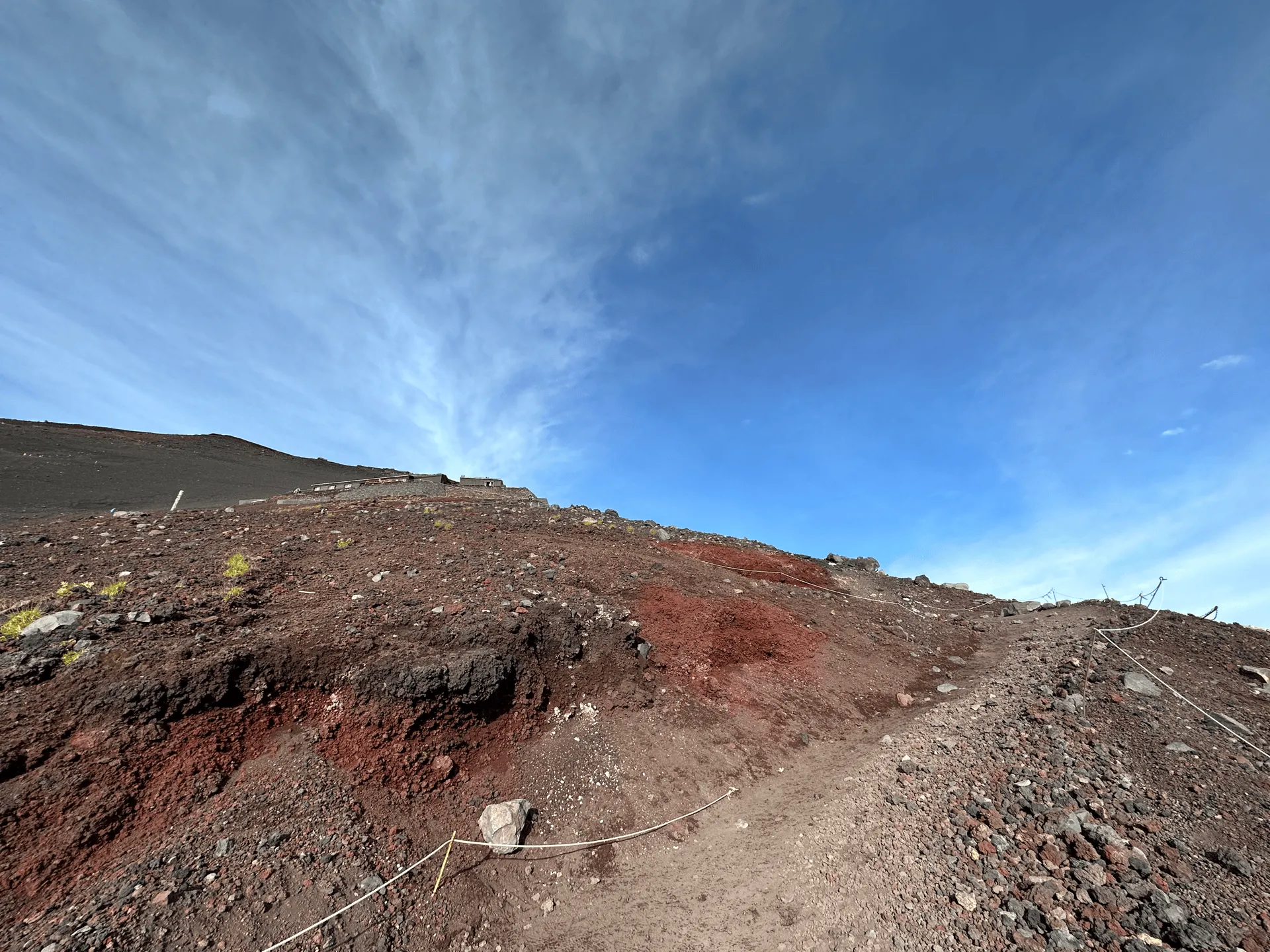


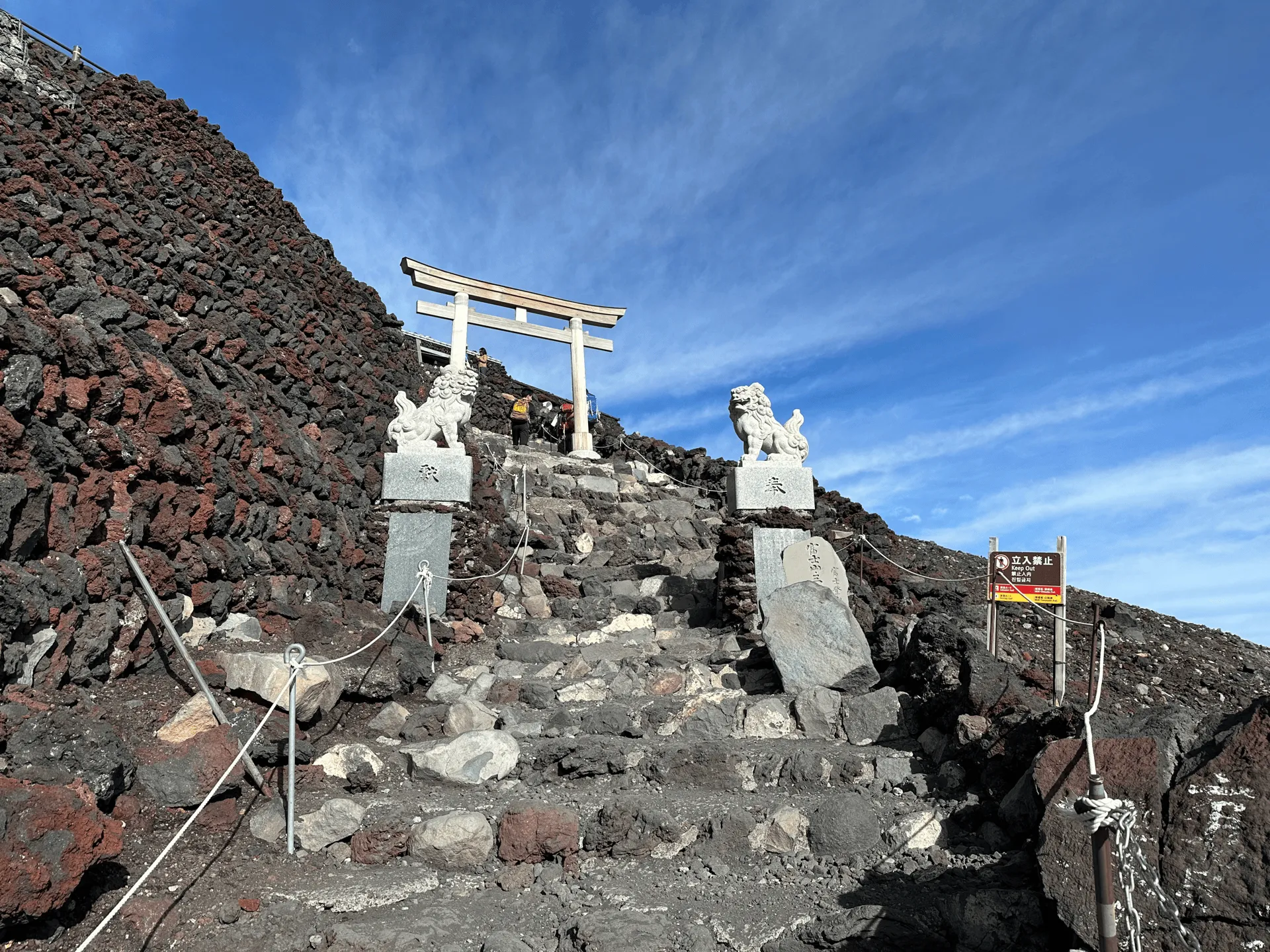
Finally, just before 8am and about 4 hours after beginning my hike, I arrived at the edge of Mt Fuji’s crater. This isn’t quite the highest point - that’s on the other side - but the descent trail starts from here so if you aren’t feeling up to it, this is a perfectly fine place to take a break before beginning your descent.
I was also quite fast in my climb, so it’s totally fine to take it a bit more slowly, especally if you need to acclimatise to the altitude. I would recommend trying to reach the crater by 11am to give you plenty of time to desecend.
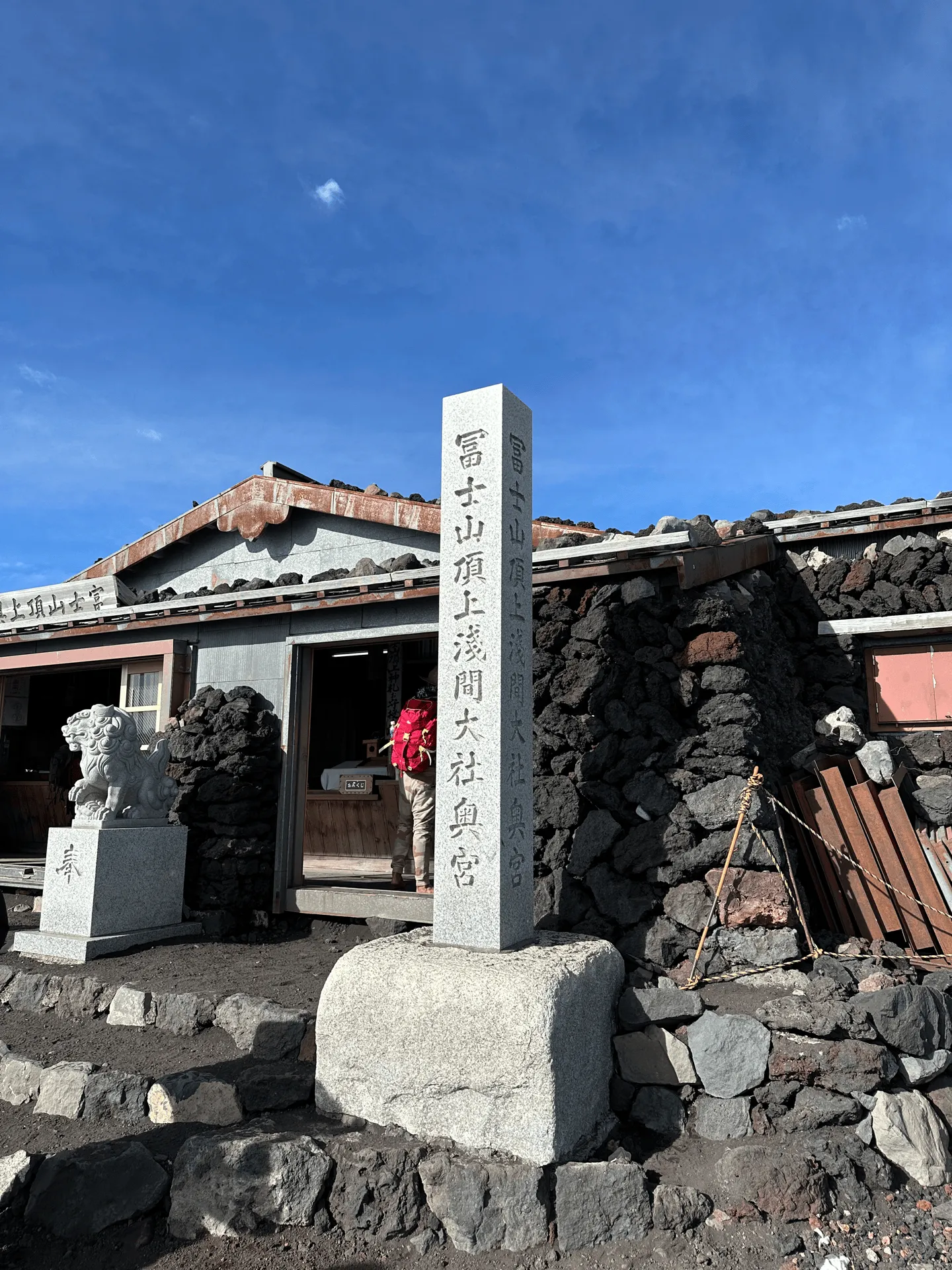
From here, I did a full loop of the crater, known as the ohachi-meguri (お鉢巡り). This will take you about 90 minutes. The weather was perfect, so I got unobstructed views down onto the towns below. It felt pretty crazy to me that I was literally at the highest point in all of Japan, and it was only 8am.
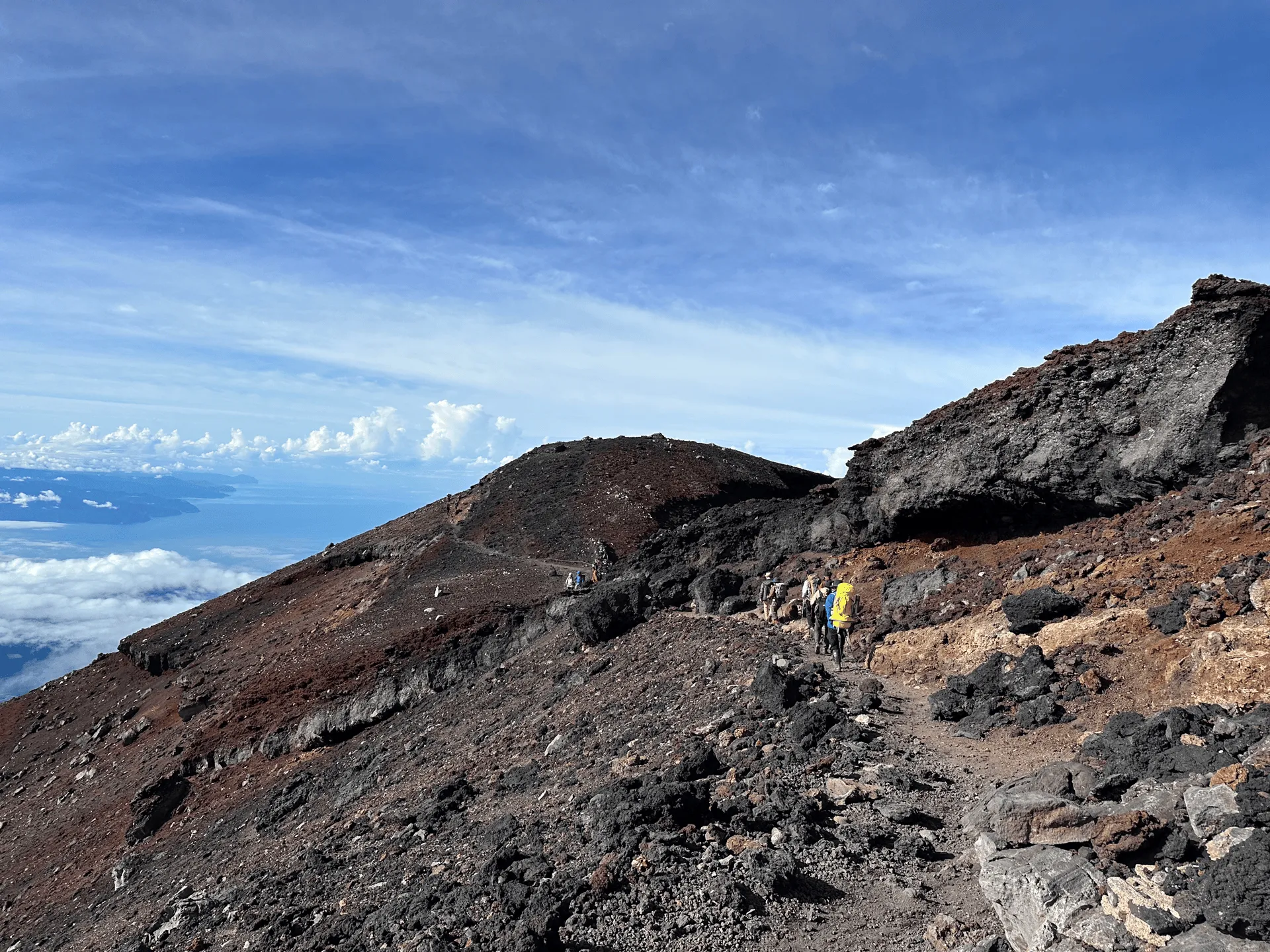

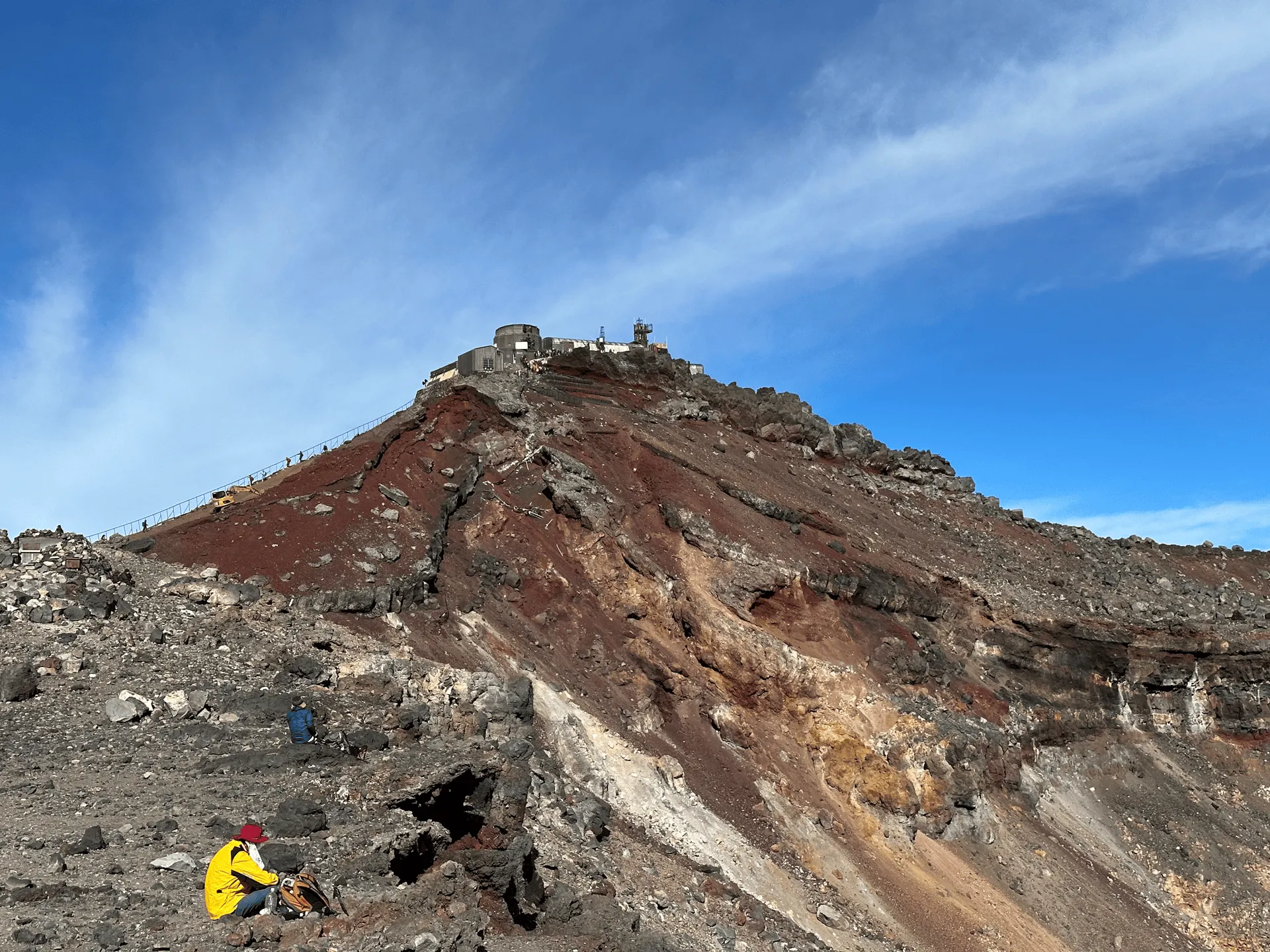
At the halfway point of the crater loop, you’ll reach the highest point of Mt Fuji, called Kengamine. This was the only part of the hike where I had to line up, for about 15 minutes to get a summit marker photo.
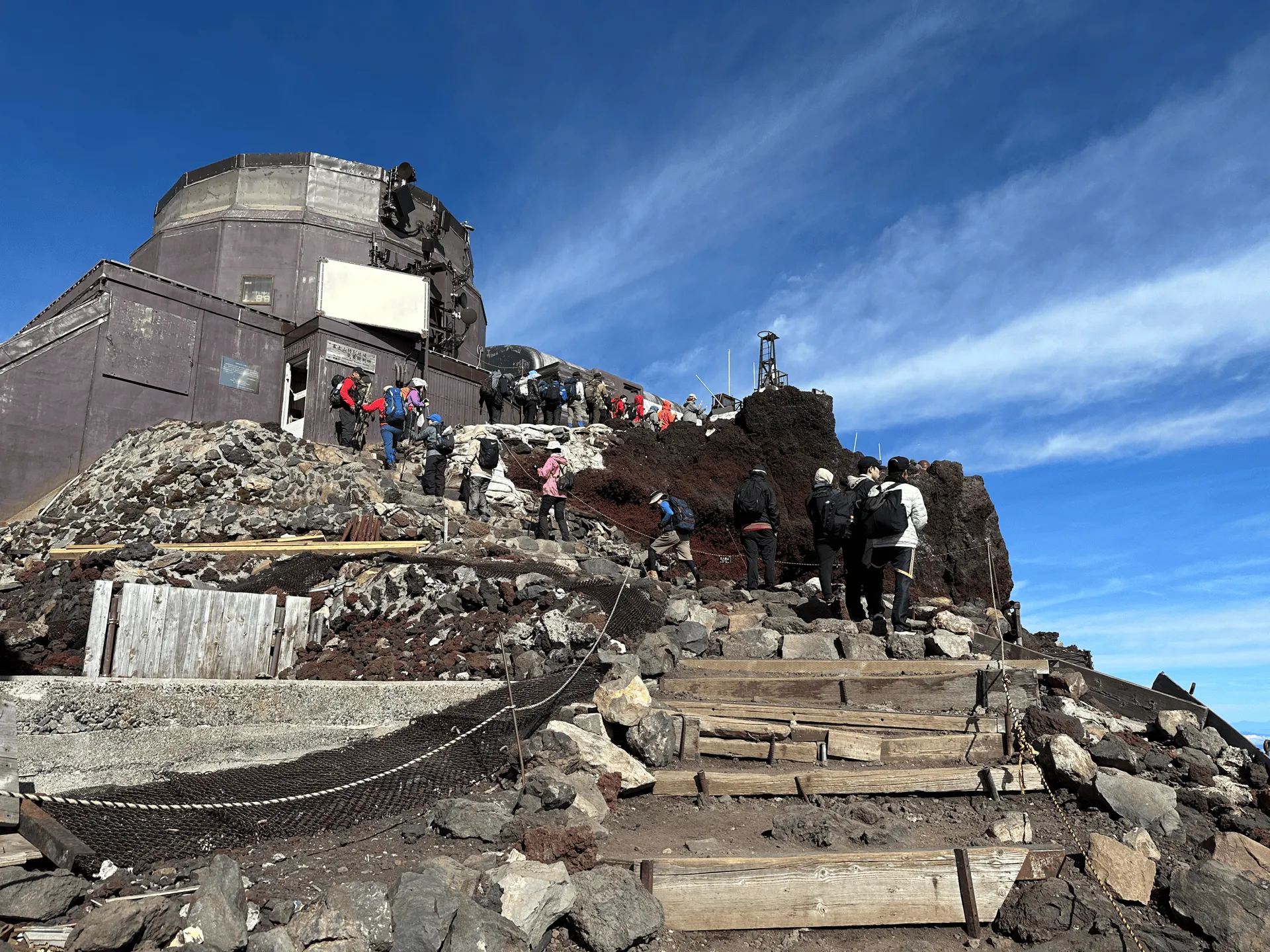
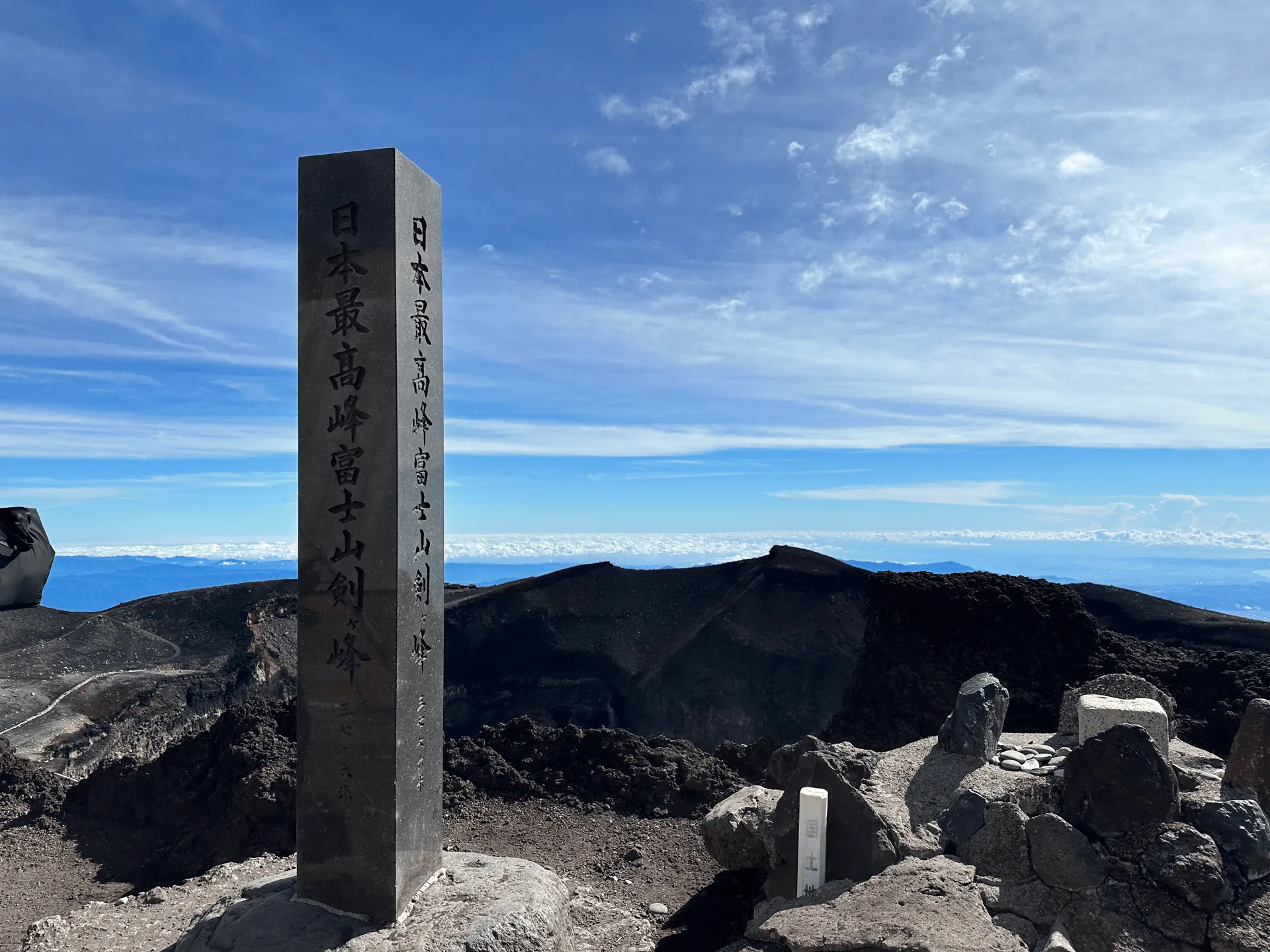
While on my walk around the crater, I could also see out to the distinctive 8 peaks of the Yatsugatake mountain range. I had climbed that just two months previously, so it’s always fun when you can spot a mountain in the distance and tell yourself “I climbed that!”

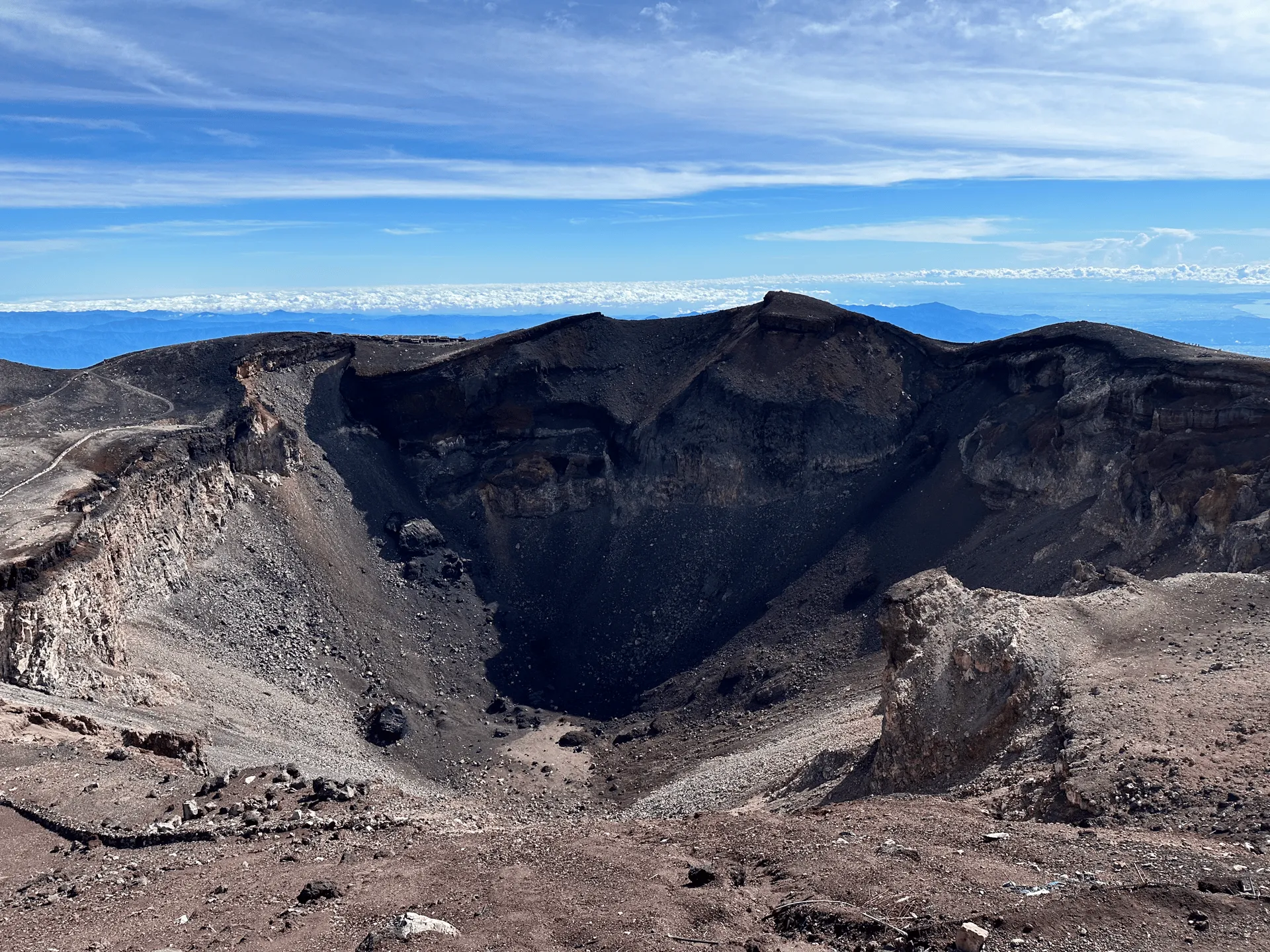
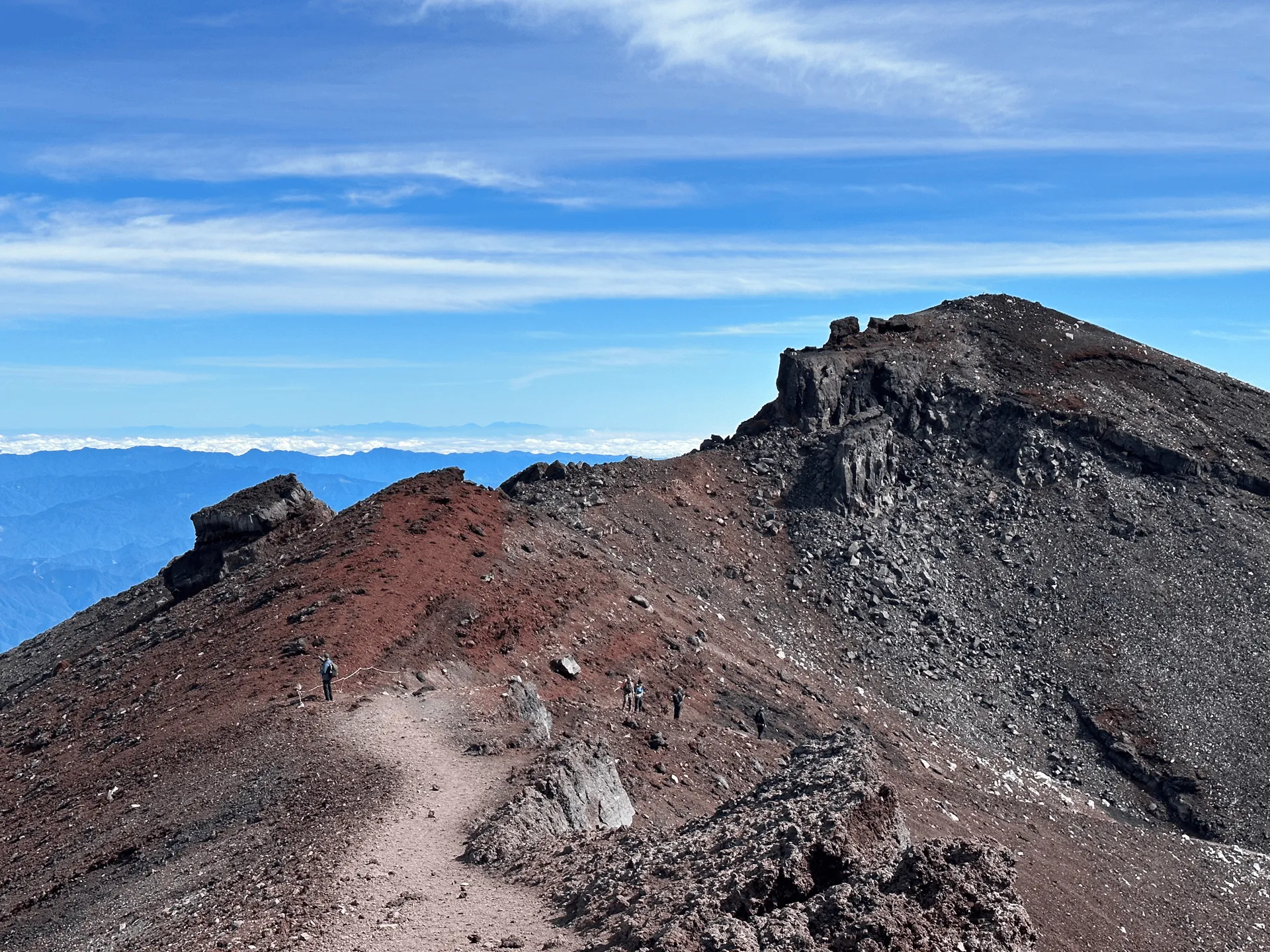
Once I completed my loop of the crater, it was time to take the descent path down. Although the climb was quite rocky, the descent path is all sand.
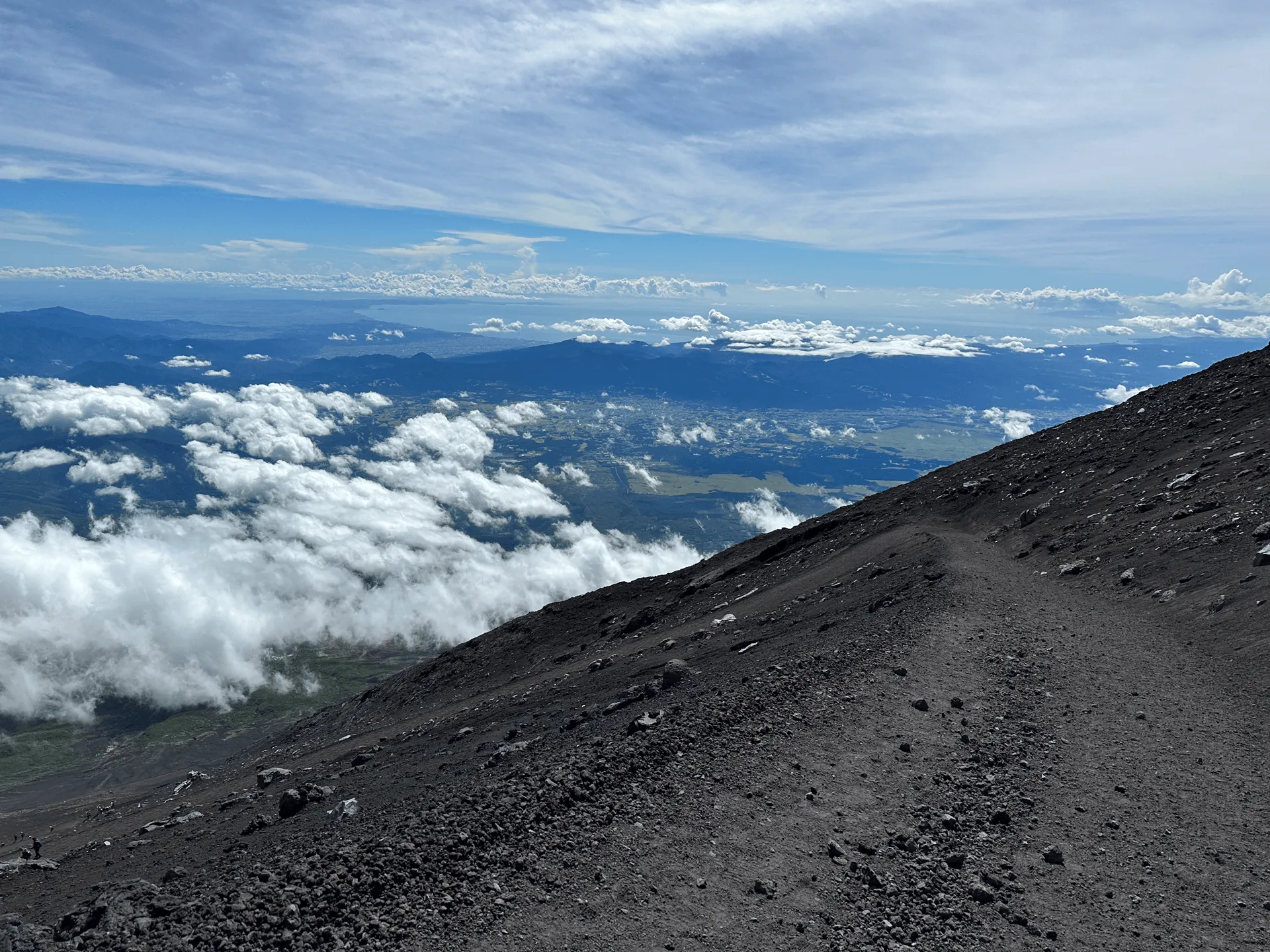
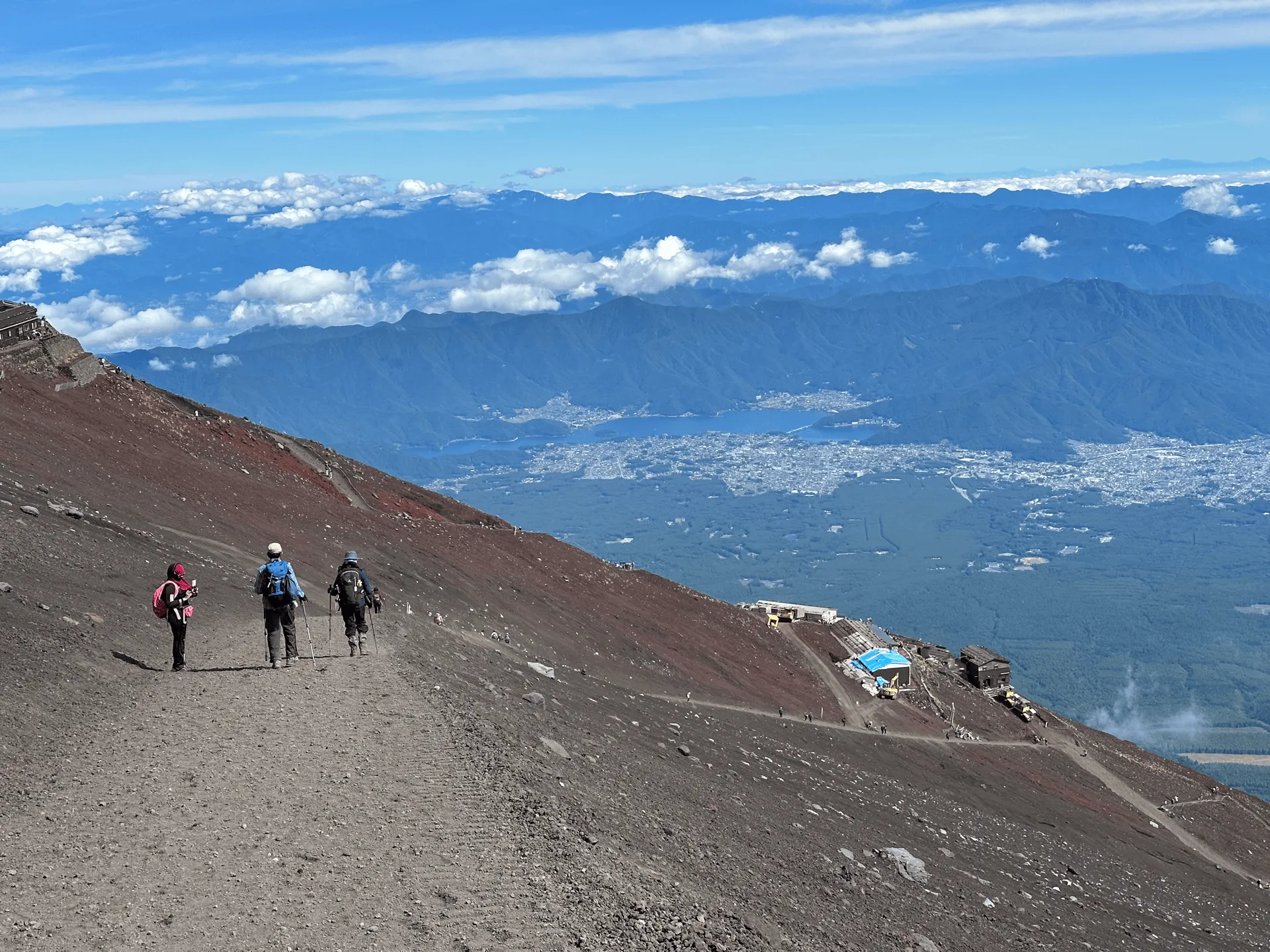
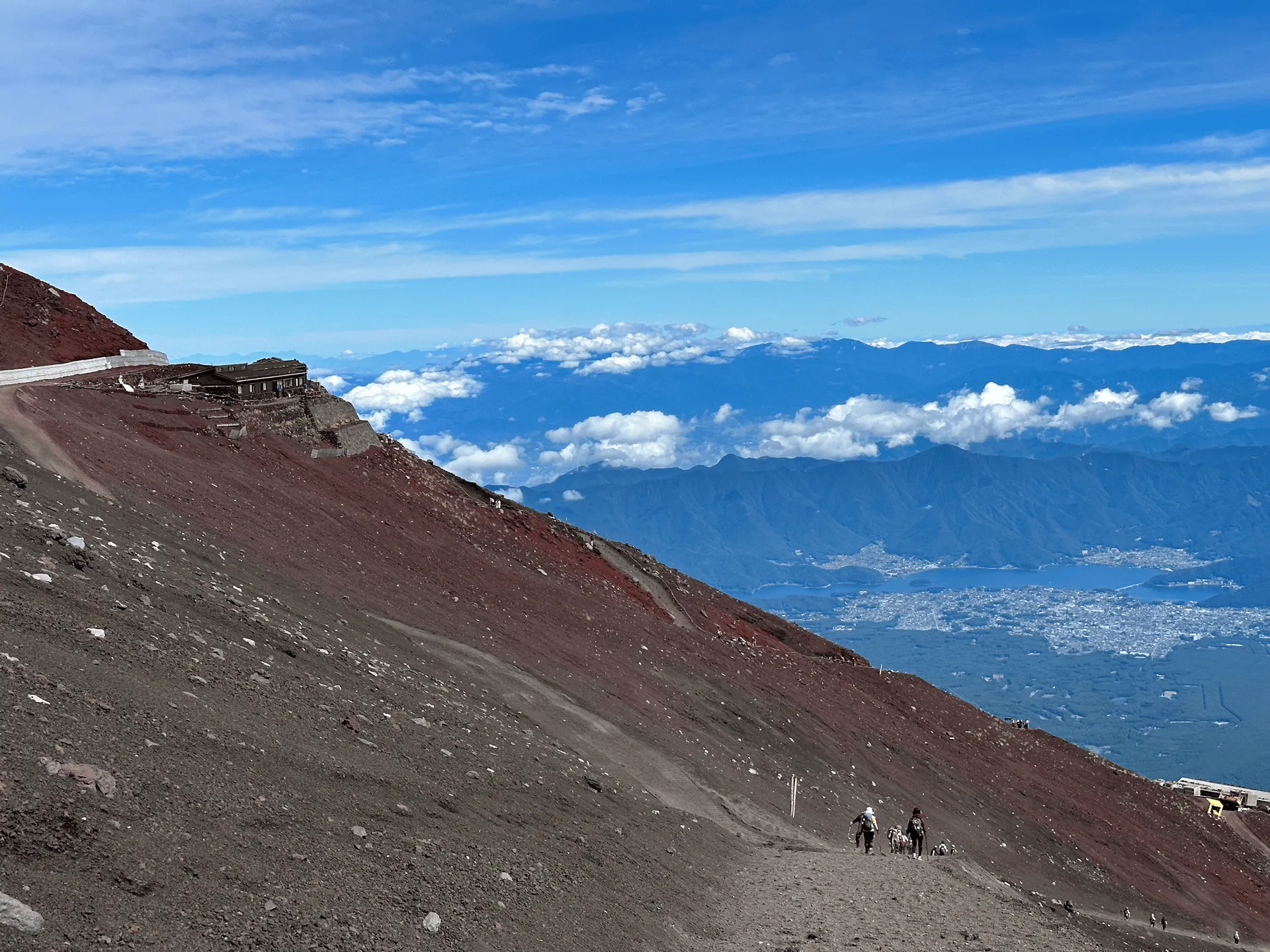
If you’re not feeling too tired from the long climb, you can lightly jog down this part (or run, as some people were doing). I also had to get out of the way of a couple of trucks, who were doing some pressing down of the trail to keep it from getting too dusty.
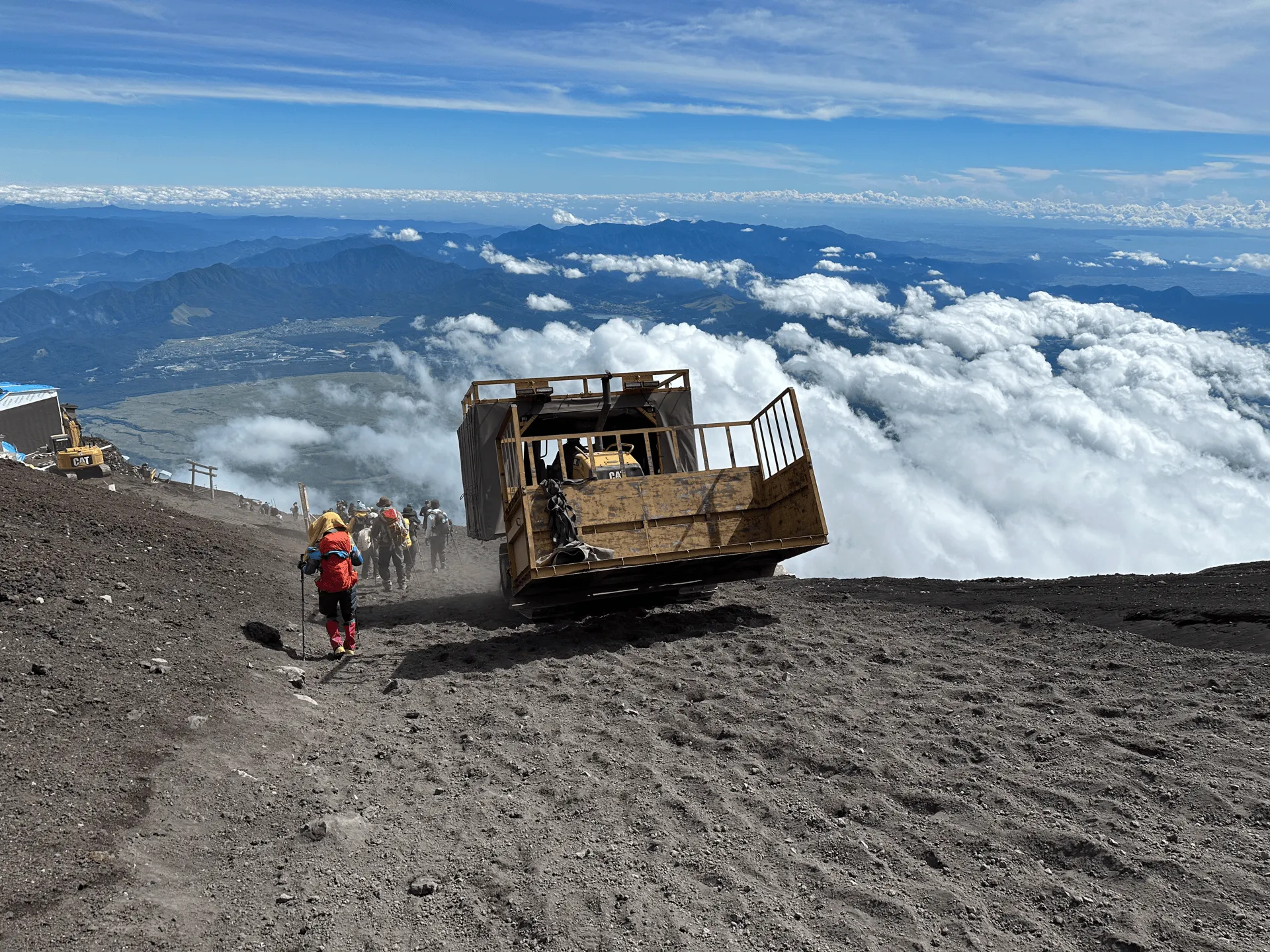
This descent was a bit of a slog, especially after all the climbing I had done, but you’ve just got to get through it. Towards the end of the trail, you join back up with the same trail used to climb the mountain, so it grew a lot more lively as I passed a lot of people who were beginning their hike up for the day.
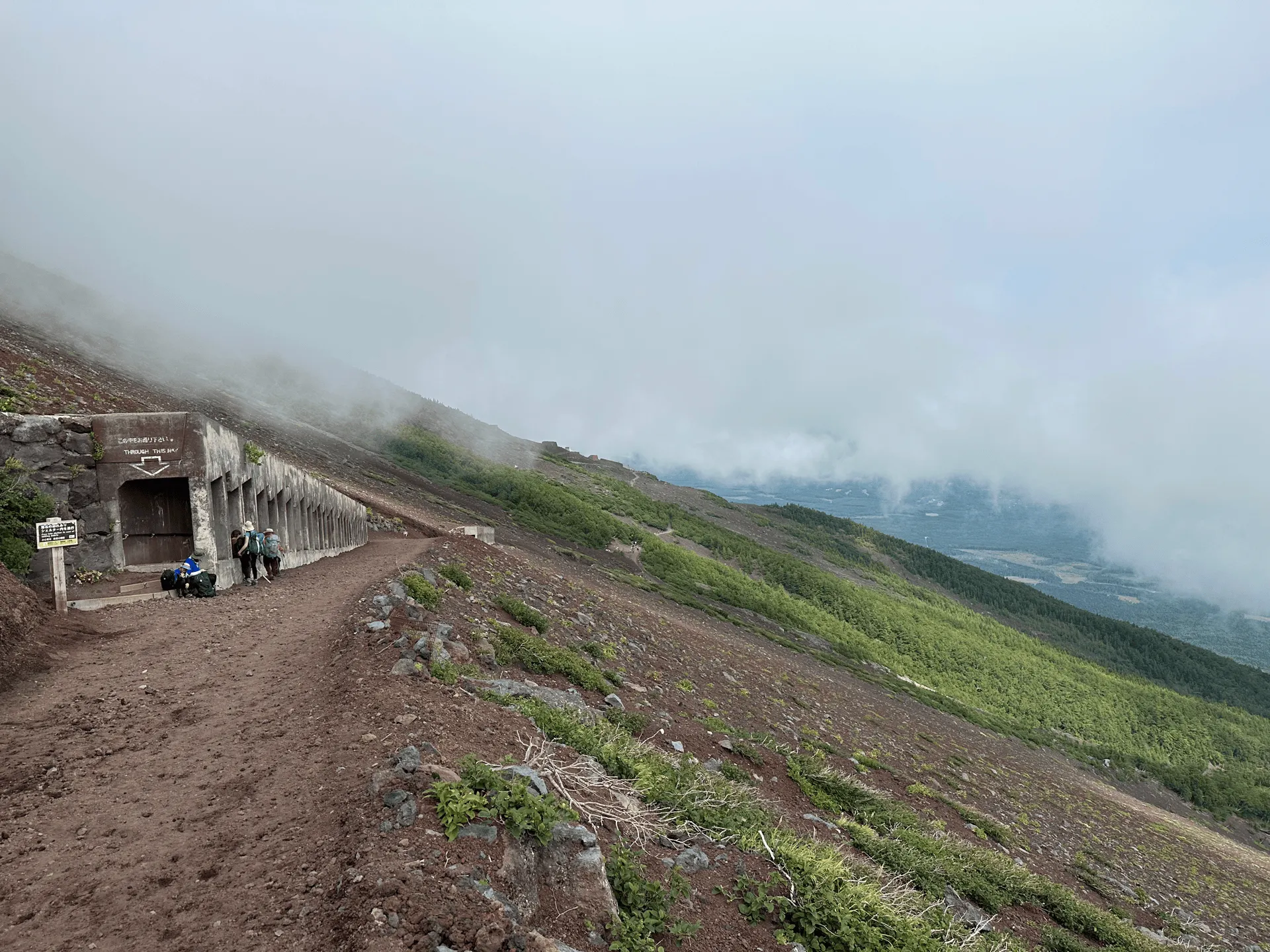
I also spotted some horses near the end of the trail. I think maybe if you get too tired to finish, a horse can cart you down?
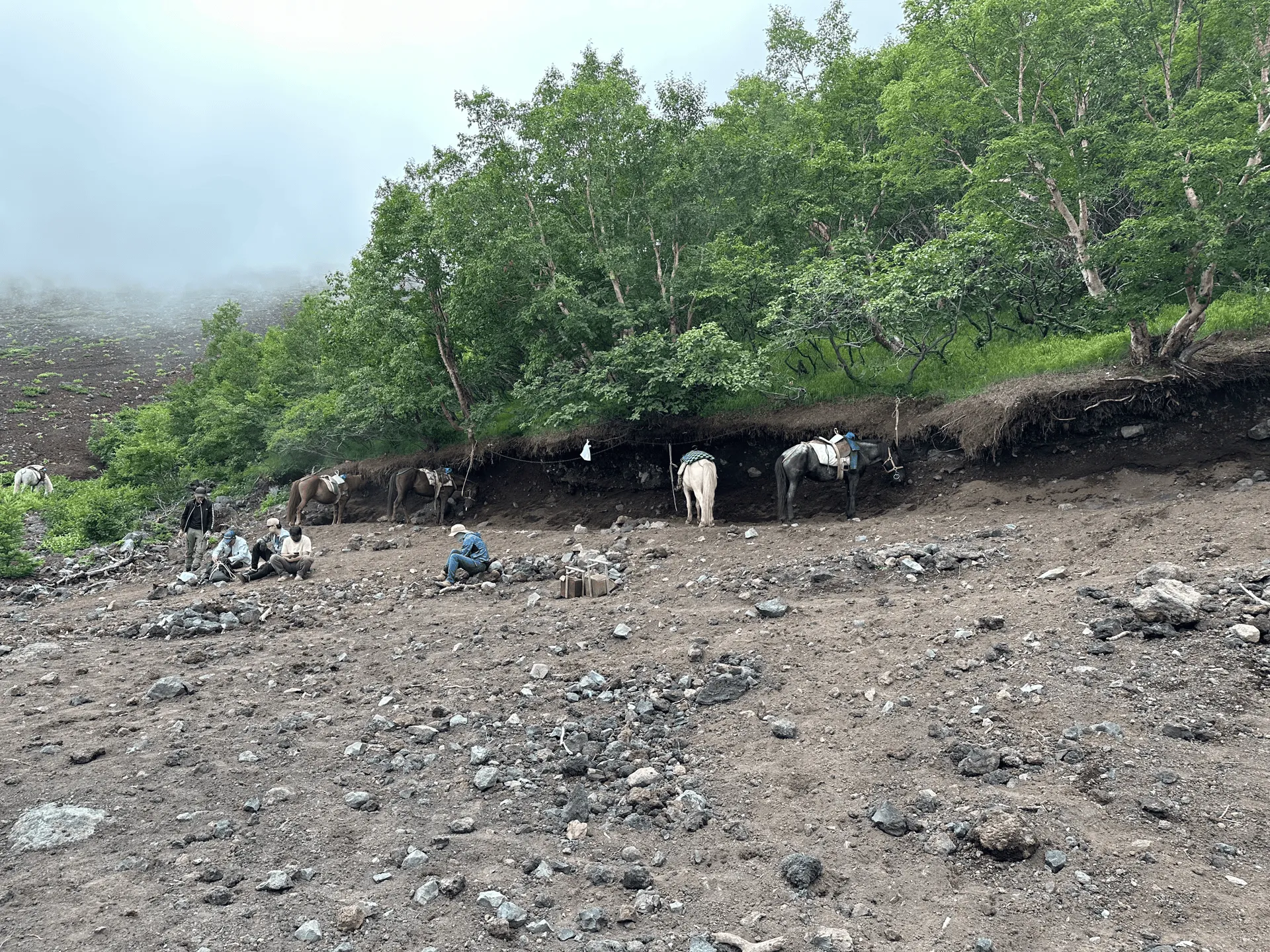
Around 11am, I was back at the trailhead and done with my hike - this put my roundtrip time at around 8 hours. I was honestly in pretty good physical condition when I hiked this last year, and I don’t think I would have been as fast if I attempted it now. But if you can aim to get off the trail by 4pm, you should be completely fine, so I think overall there’s plenty of leeway to do this as a “day” hike if you are in decent physical condition and start before 4am.
Back at the trailhead, I was surprised by the sheer amount of people. Mt Fuji sure is a popular place.
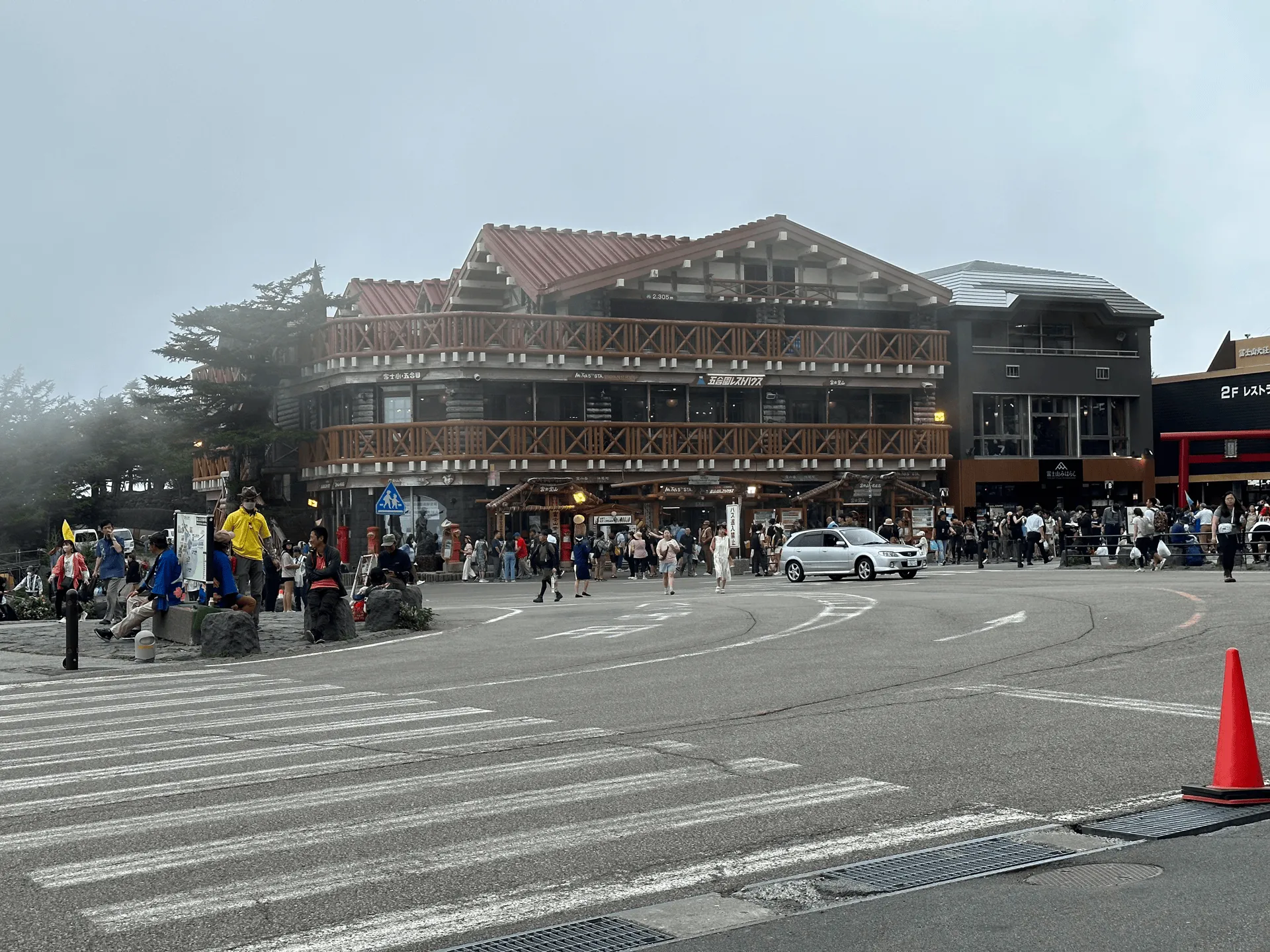
From here, I got on a local bus back to Kawaguchiko station, and then got on a train home. With no sleep and a long day’s hiking, I was pretty exhausted, but also feeling pretty accomplished.
Hiking course options
| Date climbed | Length | Course time |
|---|---|---|
| 2023-08-30 | 15km | 10h30min (the expected time for an average hiker without breaks) |
When climbing Mt Fuji, there are 4 possible hiking course options:
- The Yoshida trail: the most popular hiking course, and starting from the Fuji Subaru line 5th station.
- The Subashiri trail: a less crowded alternative to the Yoshida trail, although it joins up with it from the 8th station
- The Gotemba trail: the longest hiking course, and the most quiet
- The Fujinomiya trail: the shortest but also the steepest. Starts on the opposite side of Mt Fuji from Shizuoka prefecture
For a first-timer, I would recommend sticking with the Yoshida trail, as there are plenty of mountain huts on the way up. Although it is the most popular, if you come on a weekday I don’t think it should be crowded enough to pose a problem. Especially if you take the night bus option, it’s not a particularly popular time to set off on a hike so it doesn’t feel too busy.
In terms of toilets, they are available at the trailhead (free) and on mountain huts partway up the trail (bring some spare change). I’m not sure I spotted one on the descent trail so I would recommend using the ones at the summit if you need to before you descend.
Alternately, if you are really looking to hike the shortest hike possible to try and squeeze this in as a day hike, then the Fujinomiya one is the shortest. But note the trailhead is in a completely different place, so you will be coming from the Shizuoka instead of from Kawaguchiko.
On bullet hiking Mt Fuji vs an overnight stay
Some people used to attempt what is known as a “bullet hike” where you start climbing in the afternoon and wait for the sunrise on the summit. This is now banned, but even if it was an option, I would 100% not recommend this, as although you will be climbing in summer, the peak is very cold, and I can’t imagine waiting around on a cold peak for the sunrise is a very pleasant experience. The midnight bus option is an underrated and much better way of hiking Mt Fuji than the bullet hike.
There is the more standard option of using a mountain hut, though, which comes with two pros:
- You can give yourself time to acclimatise to the altitude and reduce the risk of altitude sickness
- It gives the chance of watching the sunrise from the summit (if you can finish your climb early enough)
Access via the overnight bus
I used the Sunshine Tour bus company for my Mt Fuji hike. Their tour package’s itinerary for 2025 looks to be:
- Bus picks you up from Shinjuku station at around 10pm
- The bus terminal for overnight buses is a good 10min walk from Shinjuku station, and you are bound to get lost. I would recommend researching it’s location beforehand, and giving yourself at least 30 minutes leeway to try and find it so you don’t miss it.
- The bus makes a stop for around 90 minutes at an onsen / rest area near Mt Fuji. You have a chance to stretch out a bit here and try and get in a quick nap
- Bus arrives at the trailhead at 3:30am
- You have until 5pm to finish your hike, before the return bus leaves
- Bus stops off at an onsen, with dinner included
- Bus returns you to Shinjuku at 10:30pm
The tour costs between 7800 and 9800 yen depending on whether it’s considered peak season or not.
Unfortunately there isn’t an option just to reserve the one-way ticket to the trailhead. Since I finished my hike so early, I just opted to call up the bus company, let them know I wasn’t going to be getting on the bus back (important, to let them know you are safe) and got on a local bus back to Kawaguchiko station before getting the train home.
When I hiked at the end of August in 2023, I did it on a Wednesday. Since it was right at the tail-end of the hiking season and it was a weekday, I was able to book the bus with very short notice. This also let me make sure the weather was good before booking, since I’m sure Mt Fuji isn’t very pleasant when it’s windy or rainy. Mid-August is the summer holiday season in Japan, so that might be a little bit more popular and/or harder to book.
If the plan I linked abvoe doesn’t work, you can try and search it for yourself. You will be looking for the following keywords:
- 吉田ルート Yoshida trail
- 日帰り Day hike
- 夜発 Departing at night
Alternate options
Alternatively, there are local buses running from Kawaguchiko station. You’ll be looking for ones that take you to the Fuji Subaru Line 5th Station.
Car access details
Since Mt Fuji is such a popular mountain, I wouldn’t recommend coming here by car. The roads near the trailhead are also closed off during the summer hiking season.
When to hike Mt Fuji
Mt Fuji has an official hiking season decided by the government, which is from early July to early September each year. You’ll want to hike within these 2 months.
The other biggest factor to take into consideration is the weather. The weather is the most important factor in whether you are going to enjoy this hike or not. On a brilliant sunny day like I had, hiking Mt Fuji was absolutely gorgeous, and I would definitely recommend it to anyone. If you are experiencing windy or cloudy conditions, I can imagine you might be in for more of a miserable or boring experience.
I recommend using these two weather apps:
- Tenkura which is a Japanese weather app exclusively for hikers. It rates hiking conditions as either “A”, “B” or “C”. You can think of it as Amazing, Borderline or Crappy.
- Windy.app I’ve found to be more accurate than Tenkura in recent experience.
Final tips for hiking Mt Fuji
Be careful of altitude sickness
If possible, spend a night at the mountain hut to acclimatise. Otherwise, I recommend taking proper breaks at the mountain huts along the way as you climb.
Drink lots of water
You need more water than you might think, especially in summer. Staying hydrated apparently might also help reduce the risk of altitude sickness. I would recommend bringing 2L if you can. However water is heavy, so alternatively you could bring a 1L and be prepared to pay 500 yen each for bottles of water at the mountain huts.
Bring a headlamp
If you are starting early like I did, a headlamp to see in the dark is a must, because it will be pitch-black.
Bring warm clothing and rain gear
You’ll start off your hike in full summer mode, but it’s quite cold at the summit so you’ll want to bring some spare layers. I brought a thin jacket which I wore. I also keep in my backpack a small ultralight down jacket from UNIQLO which is great because it compresses down, and handy to hold onto just in case you need it.
Also since weather conditions on the mountain can be variable, you should always bring a good rain jacket, even if the forecast says it will be sunny. You’ll be miserable if it does start raining.
Hiking shoes
It’s better if you have them, but I wouldn’t buy new hiking shoes and immediately wear them on a long hike - you need to break them in with some shorter hikes first.
Keep an eye on the time
The official course time for the Yoshida trail is 10.5 hours. Especially if you are attempting a day hike, you should be aiming to reach the crater at 11am at the latest so that you have plenty of time to descend off the mountain.
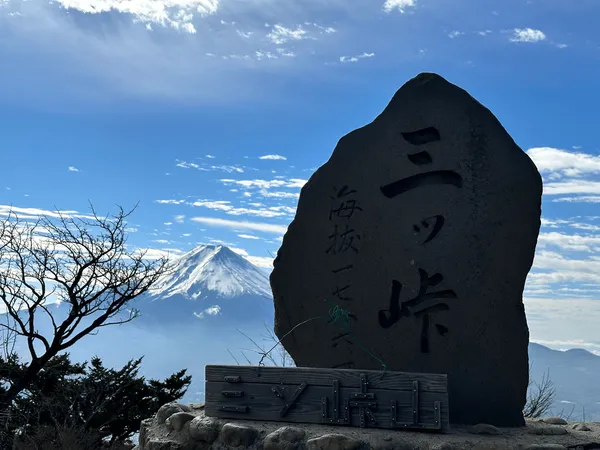
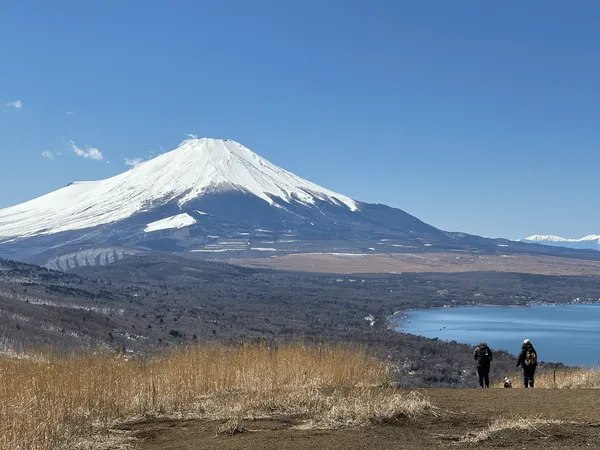
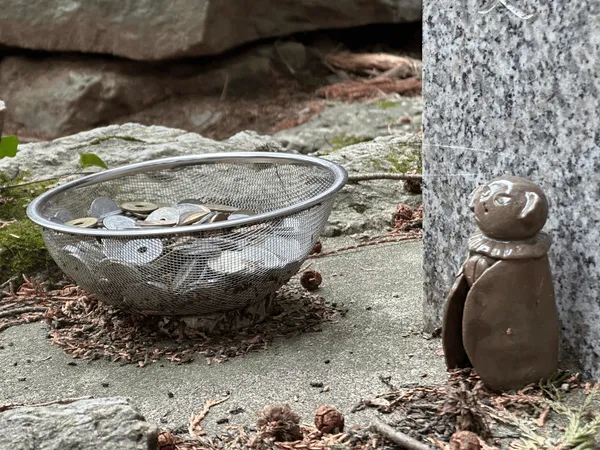
Leave a comment